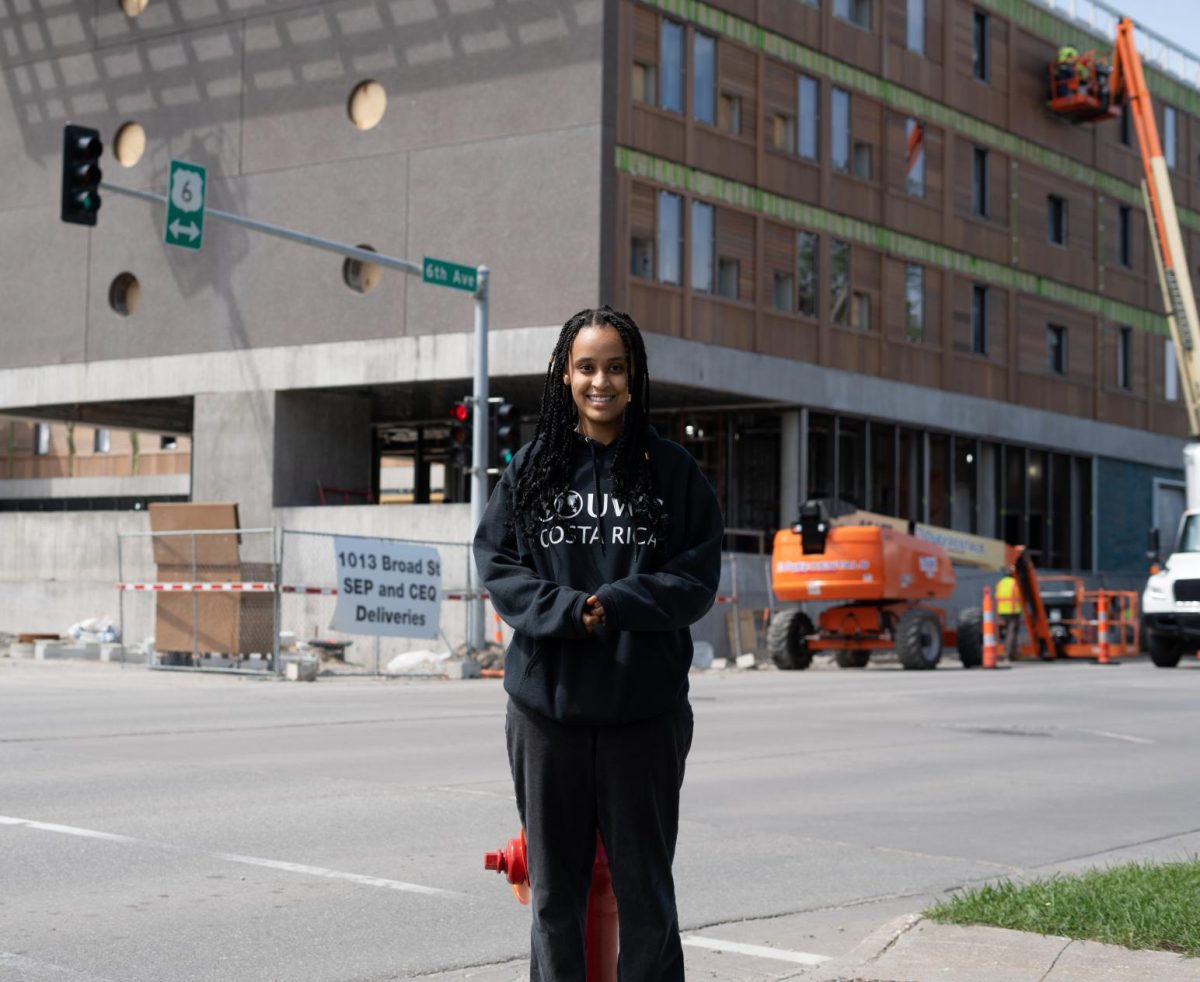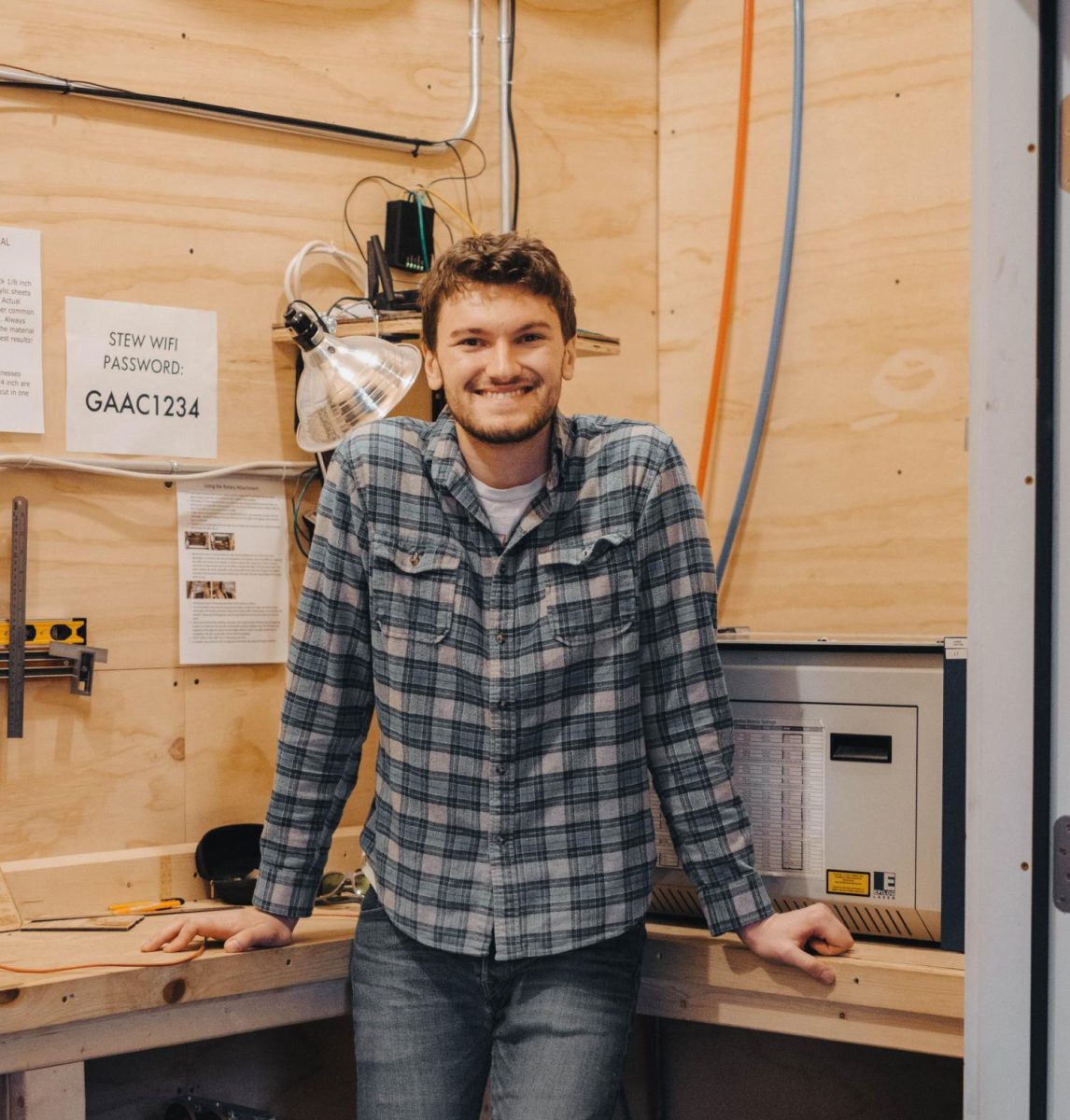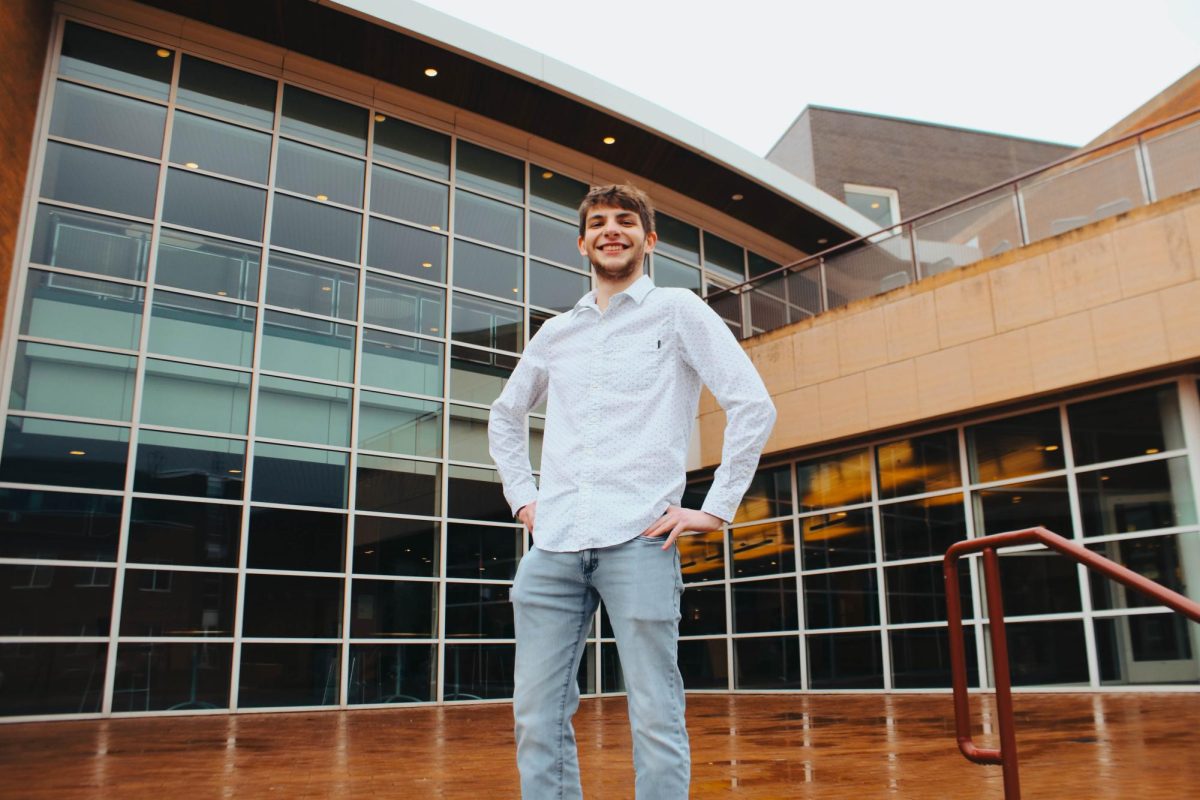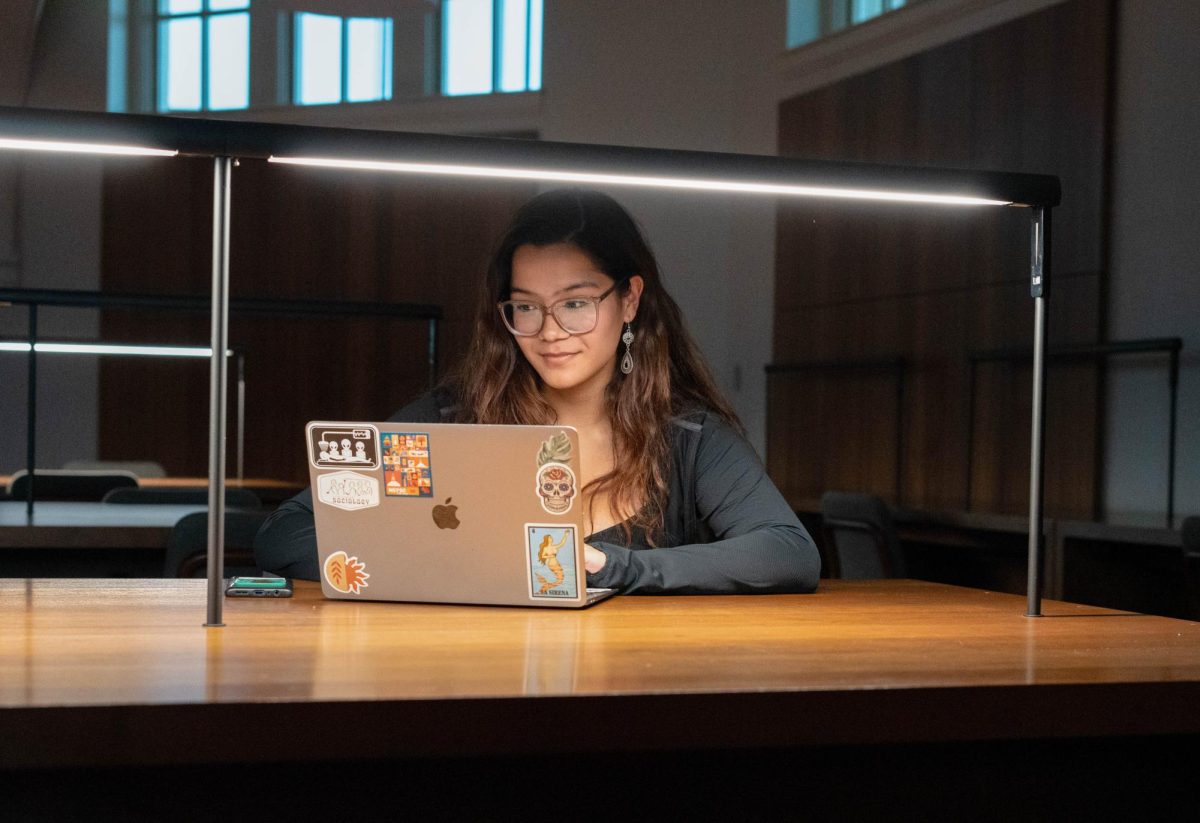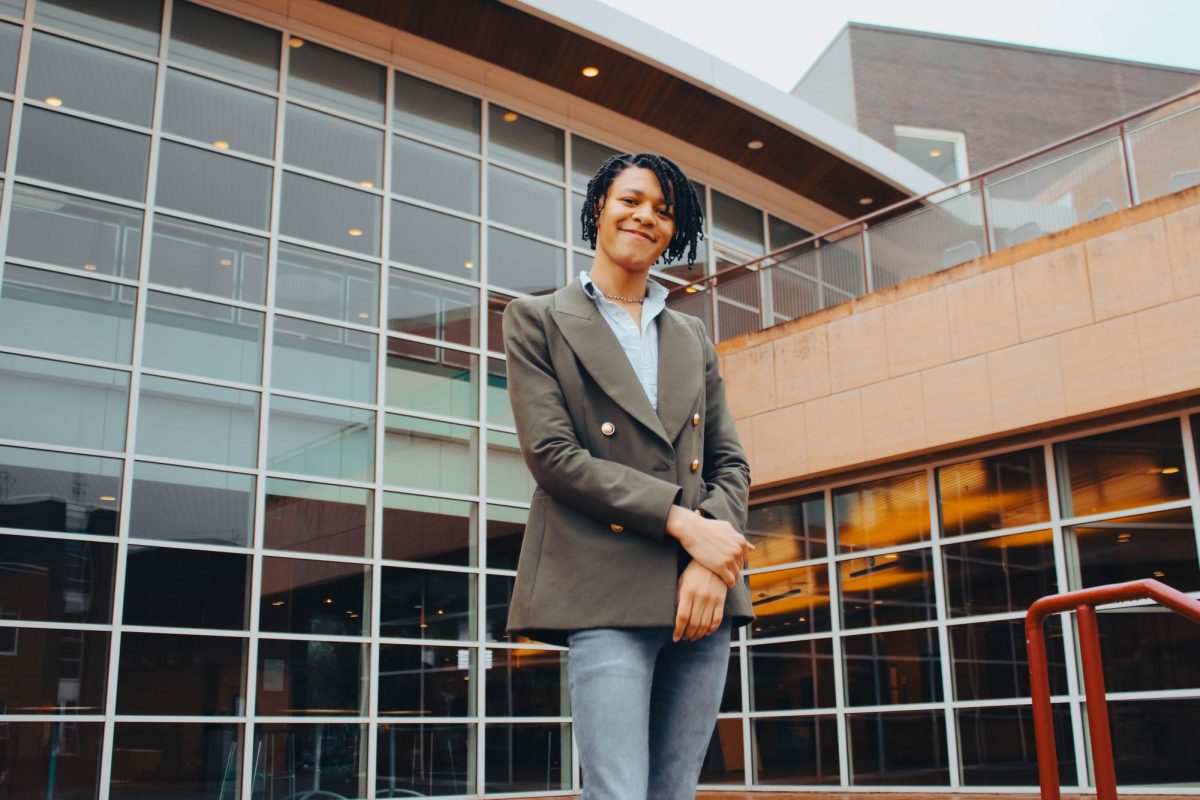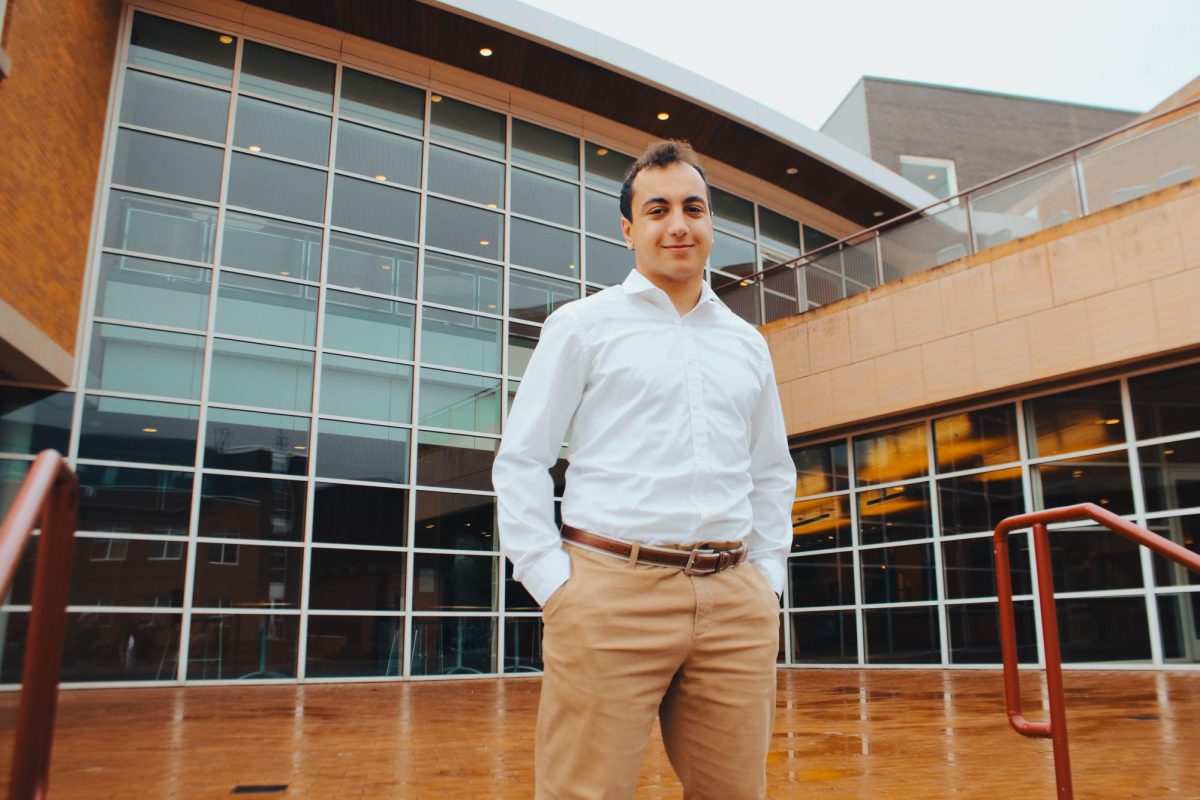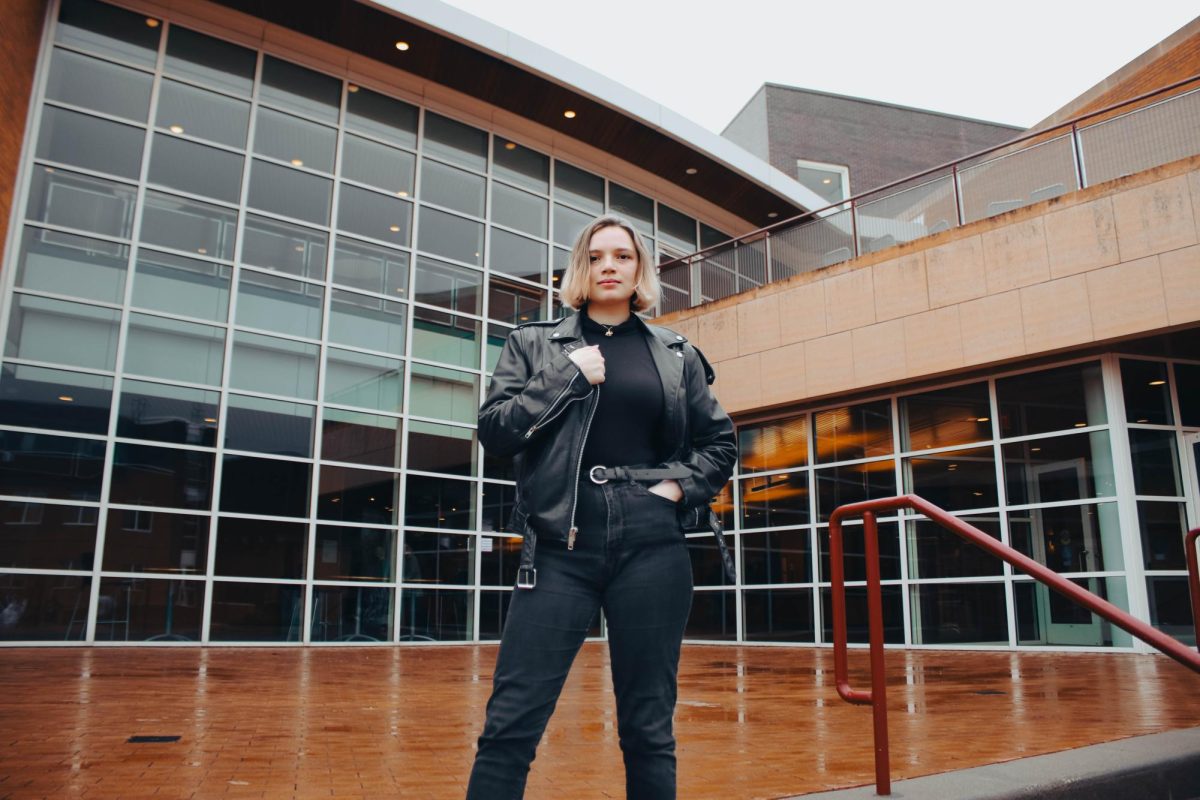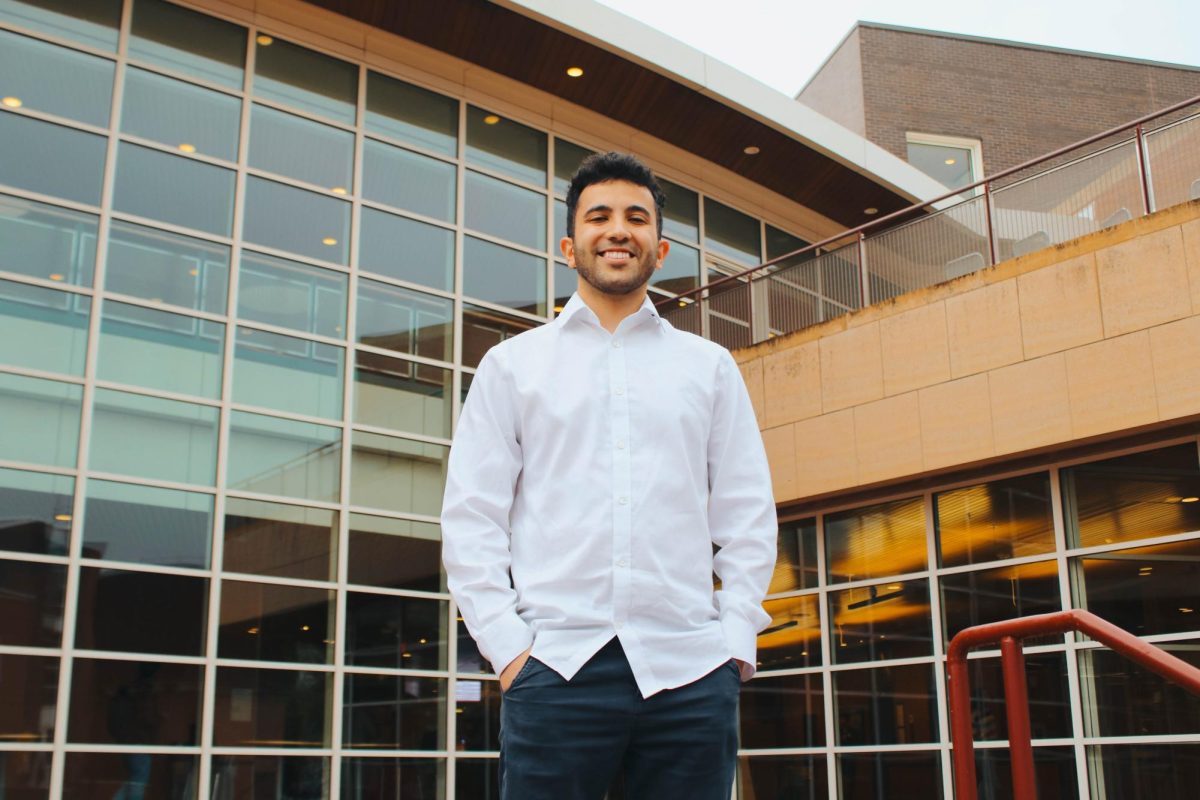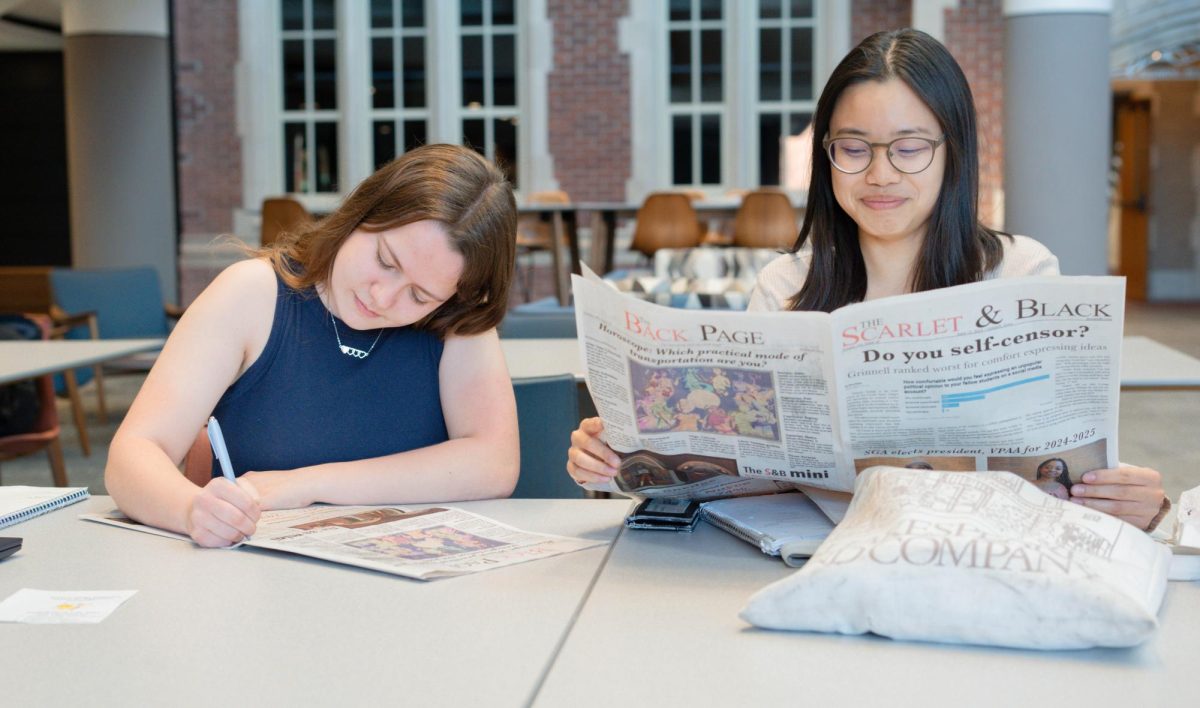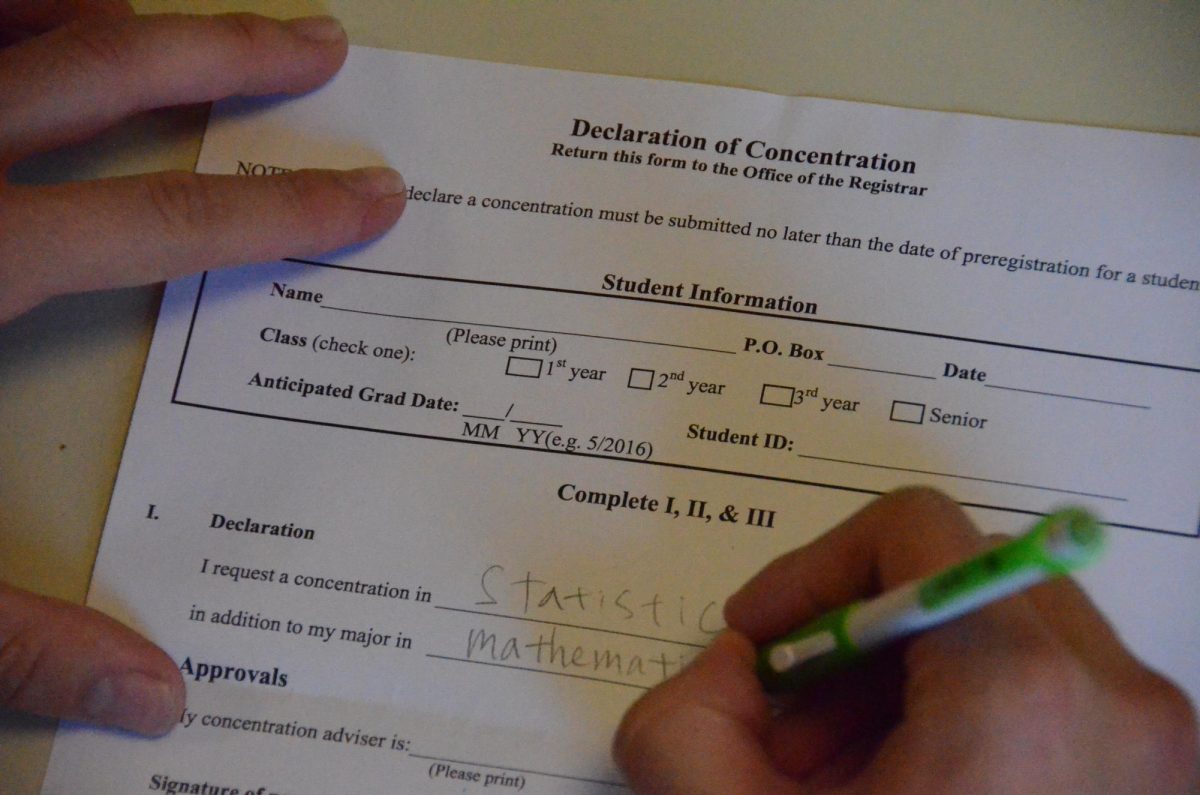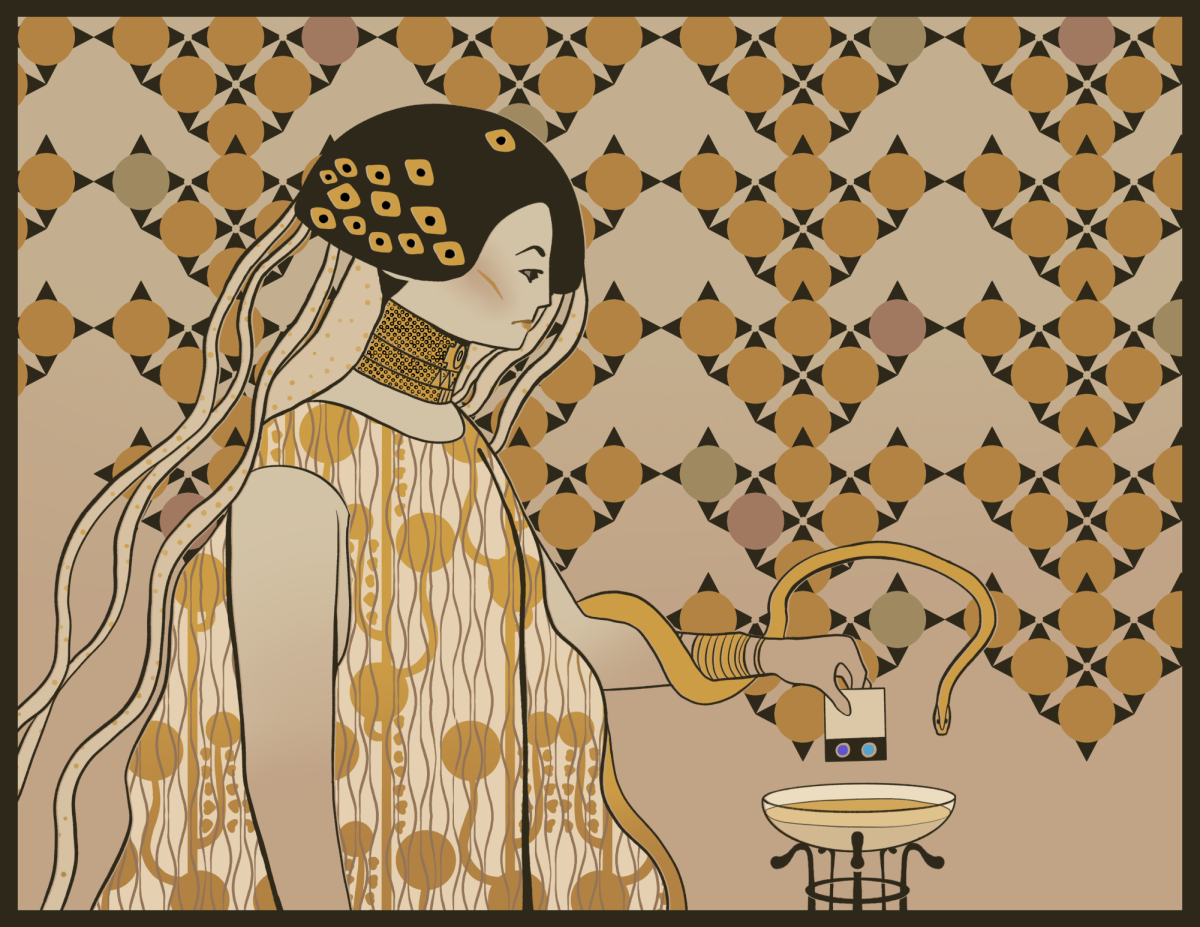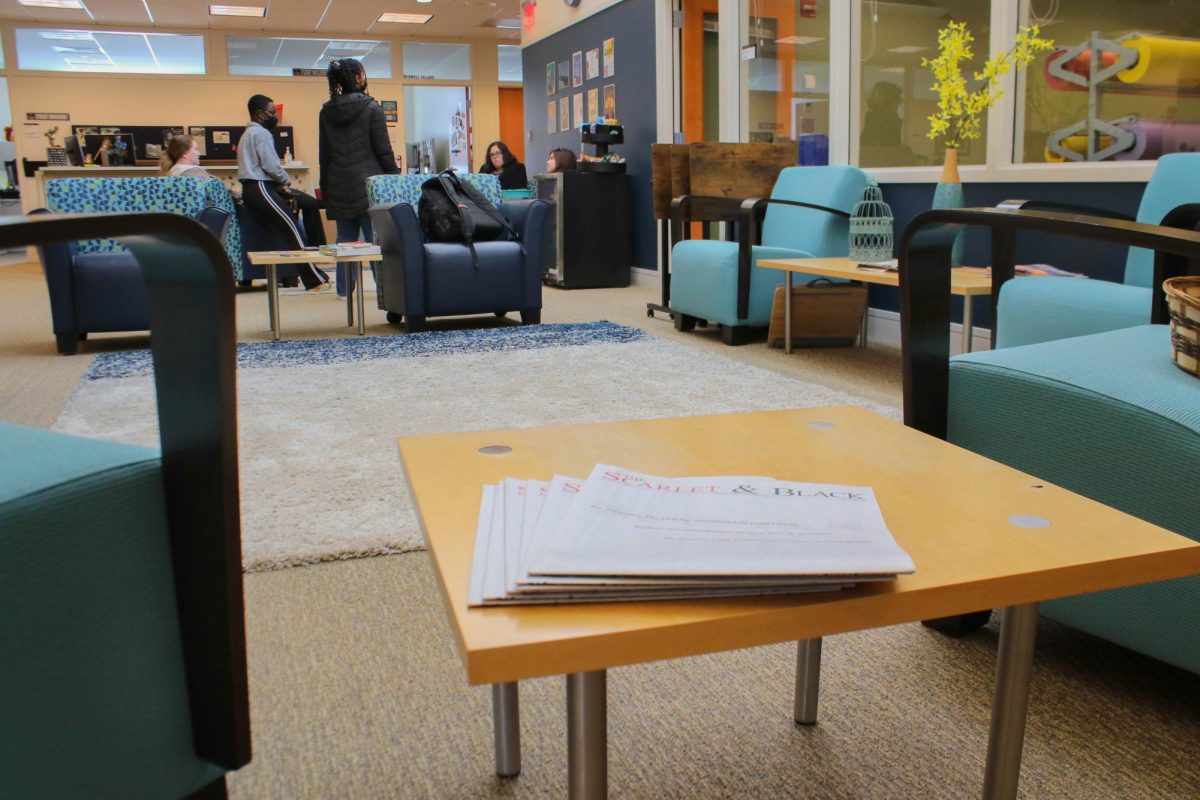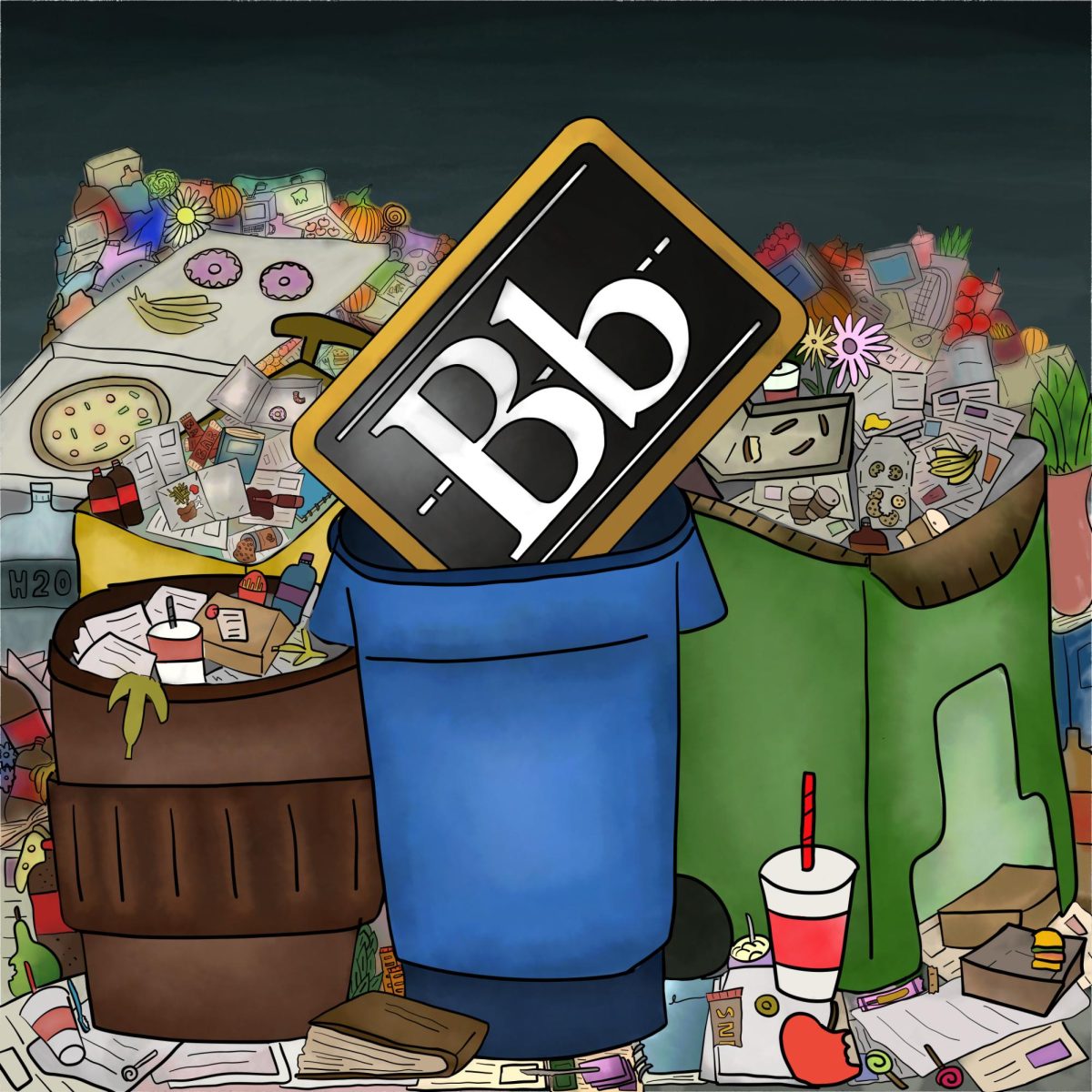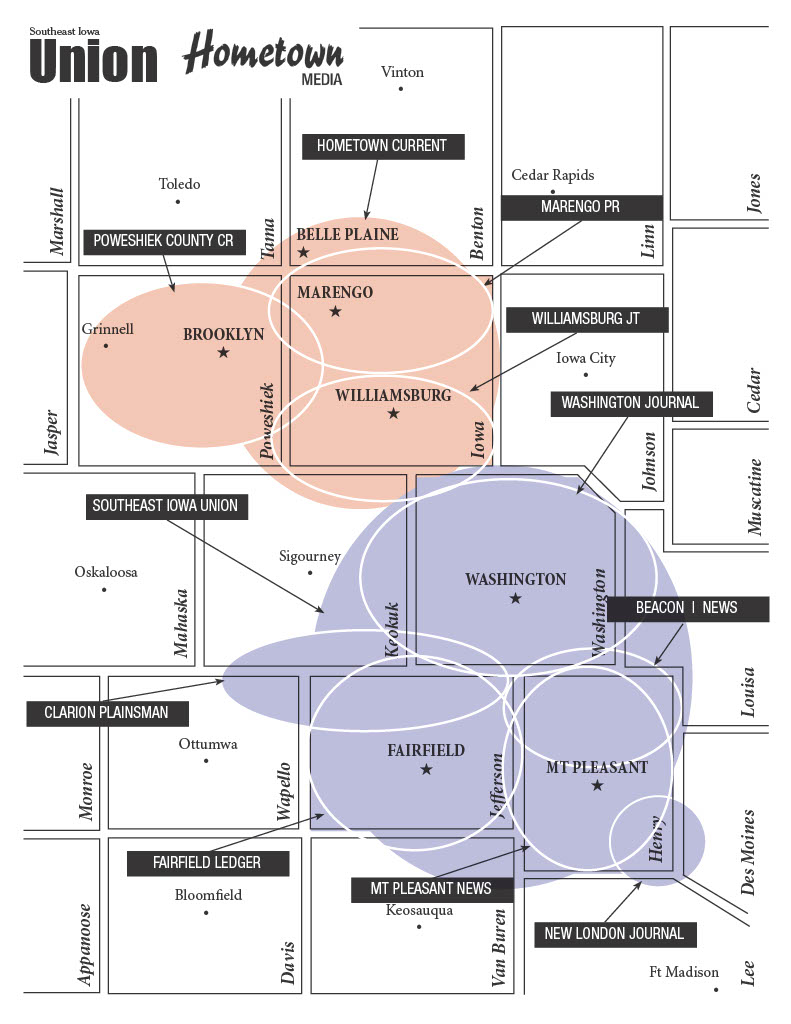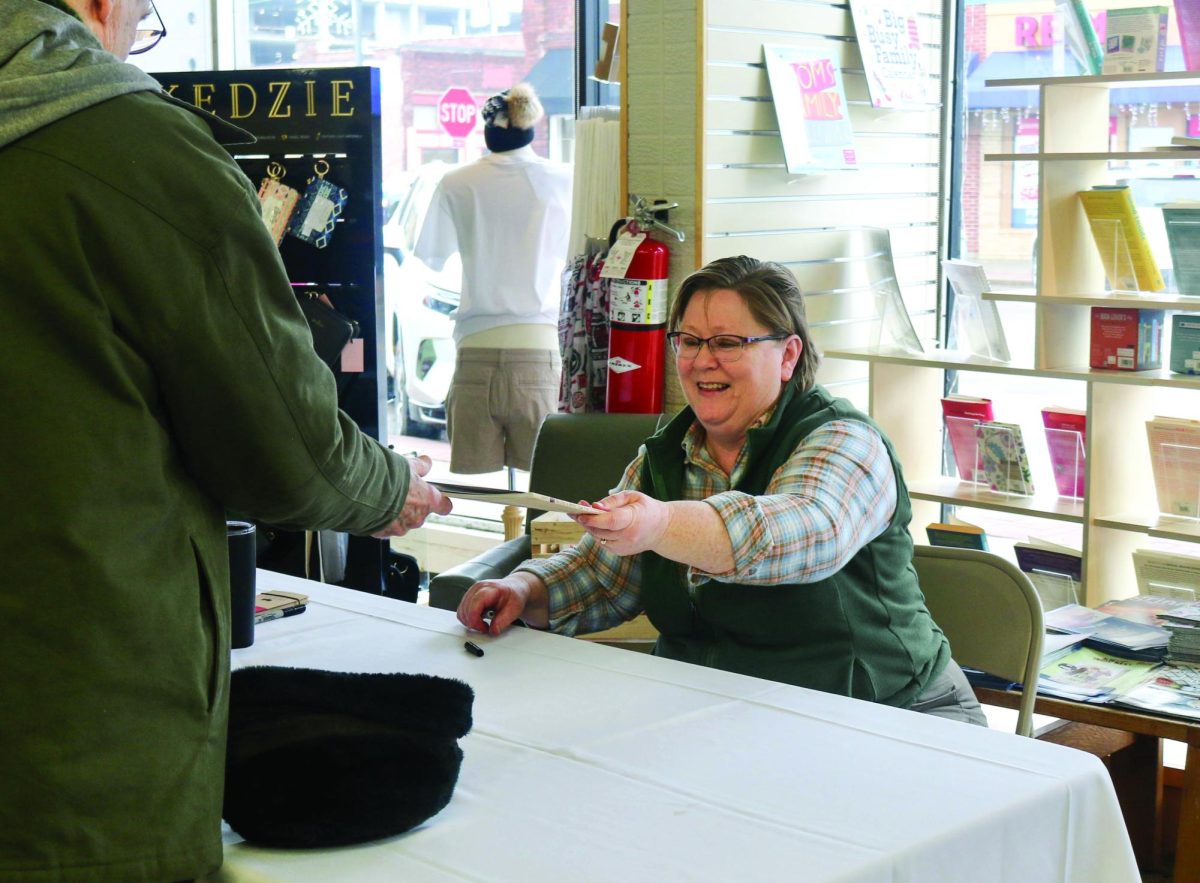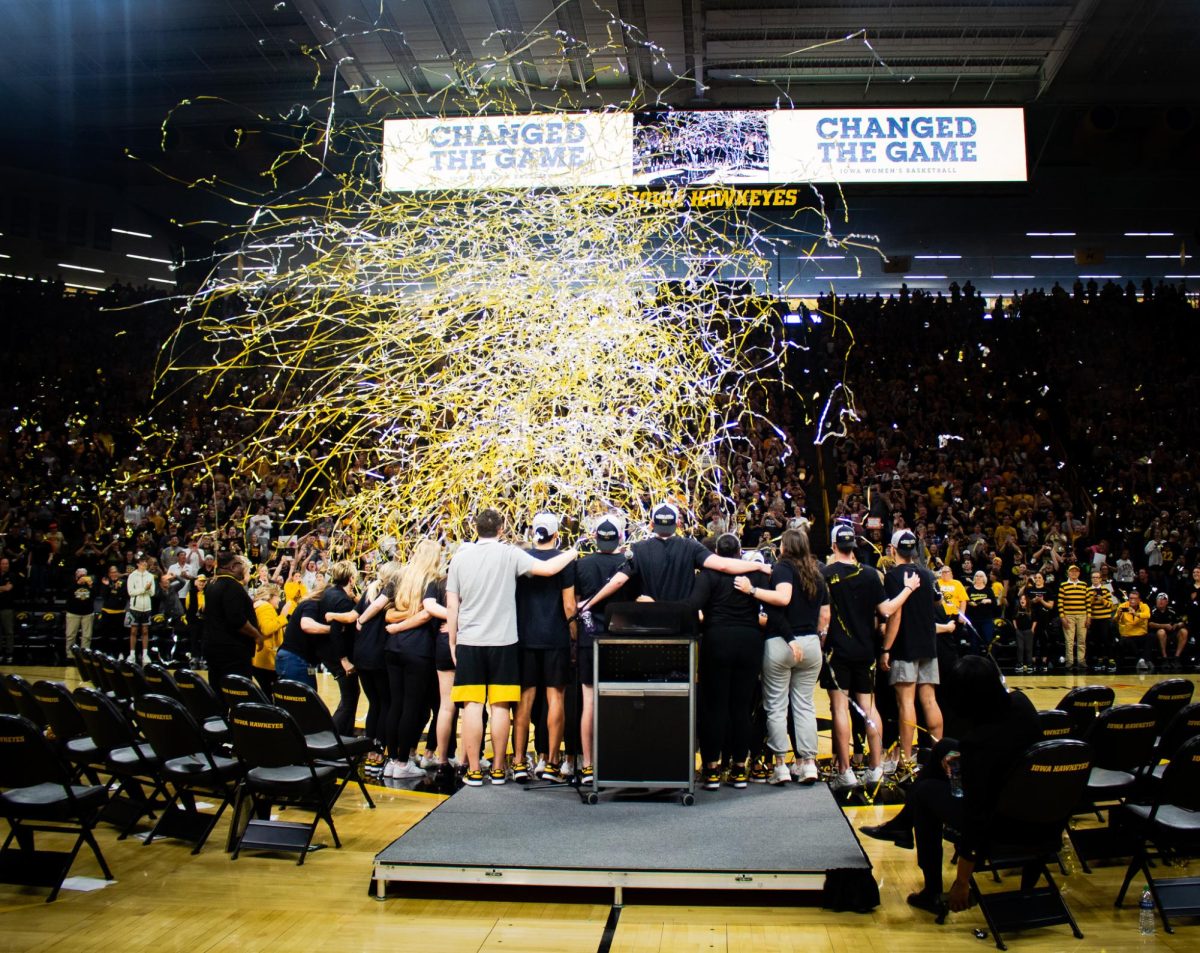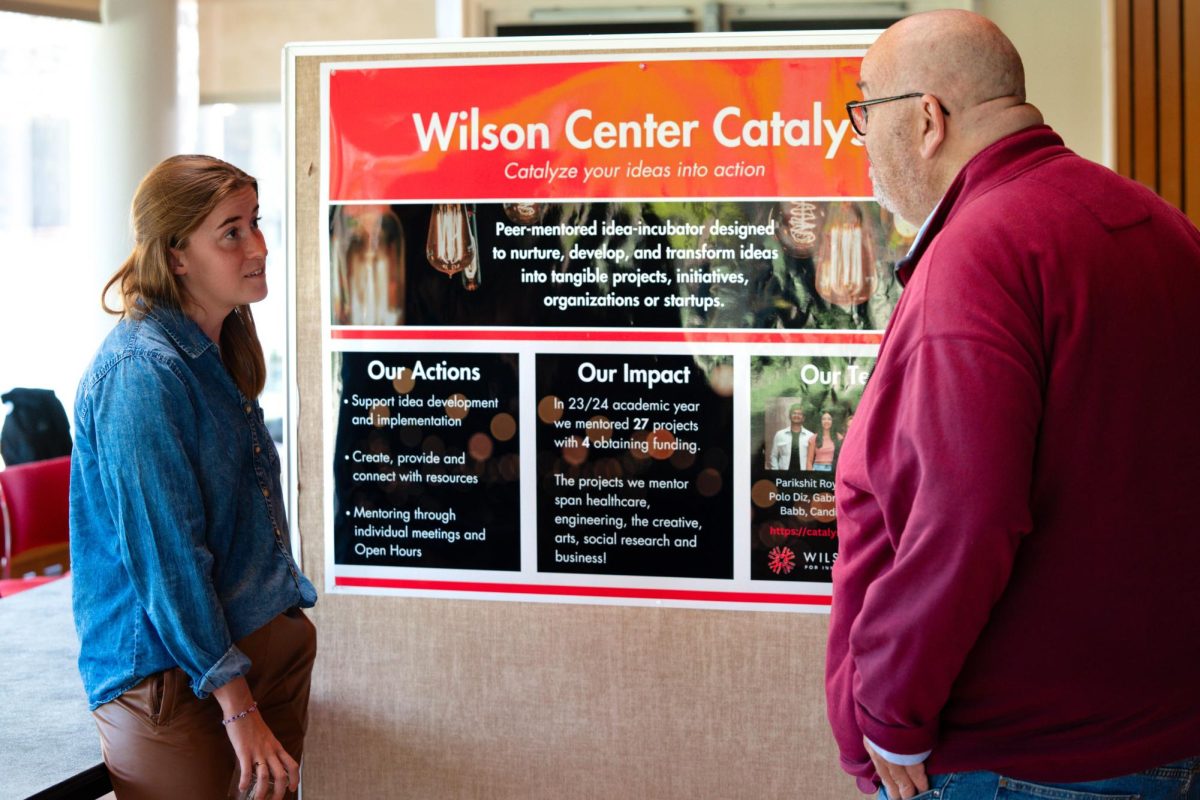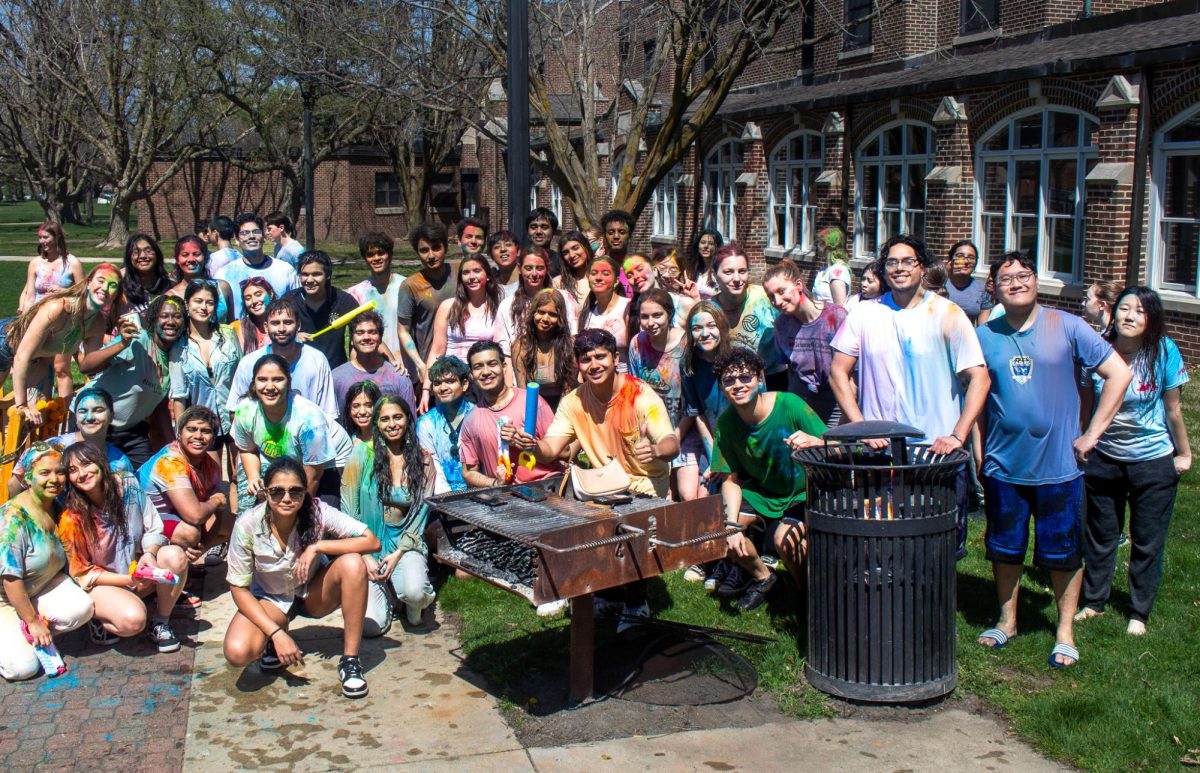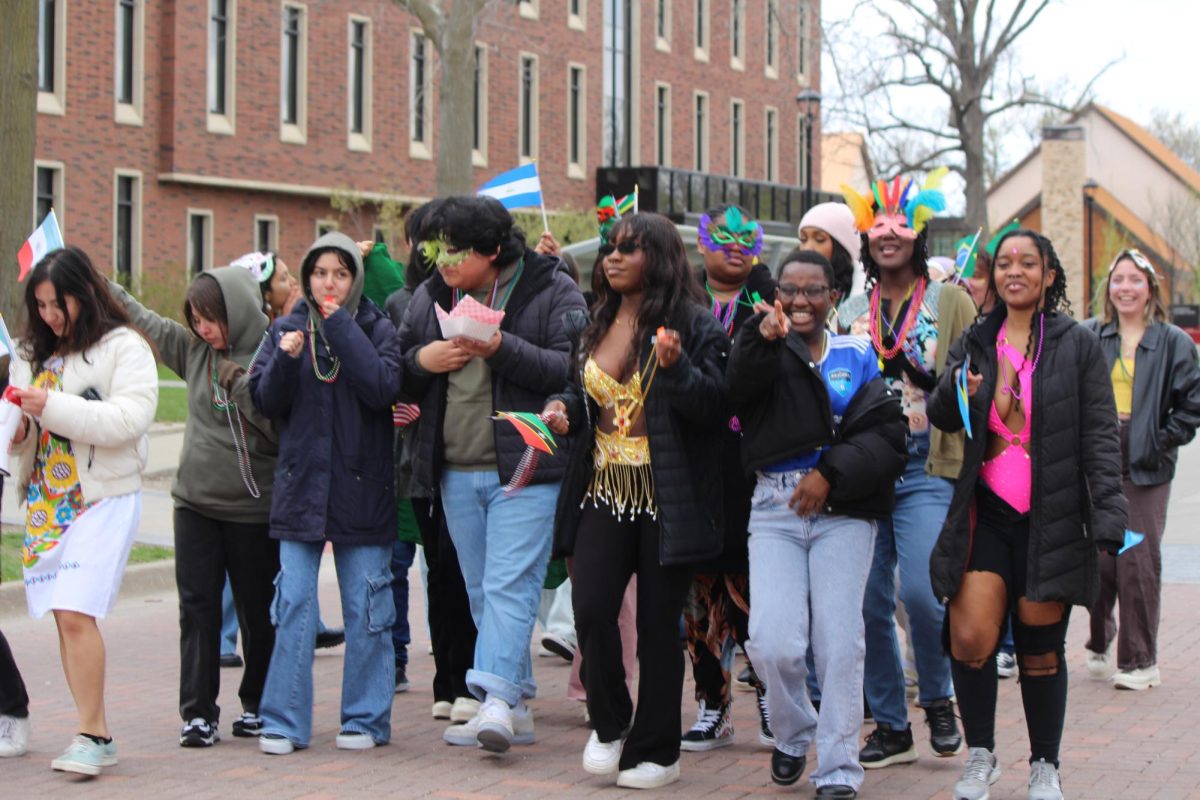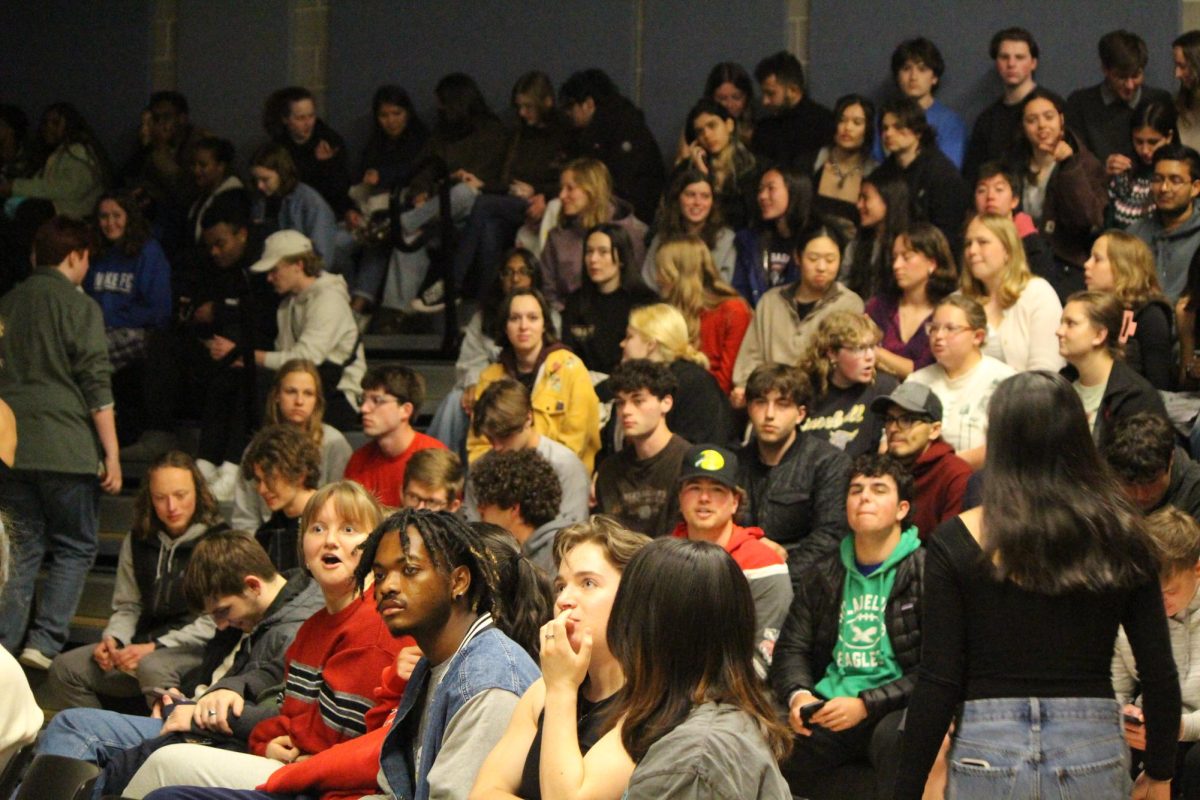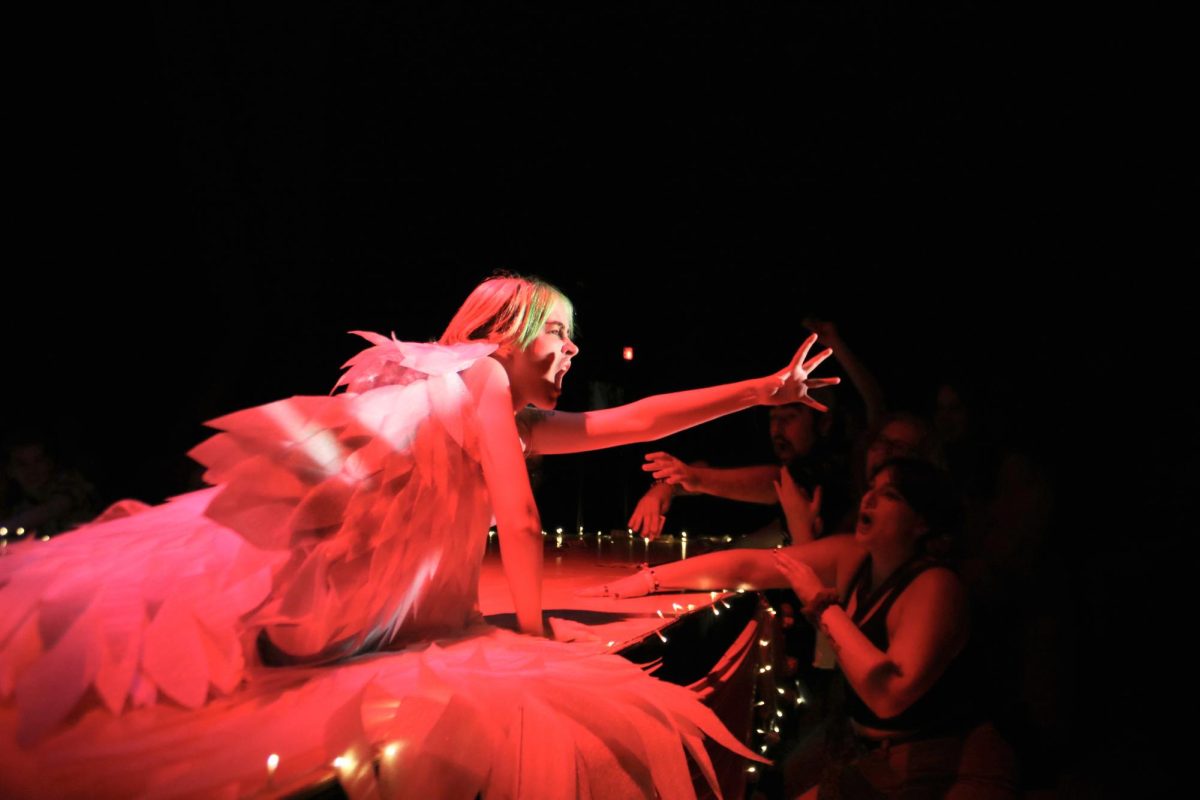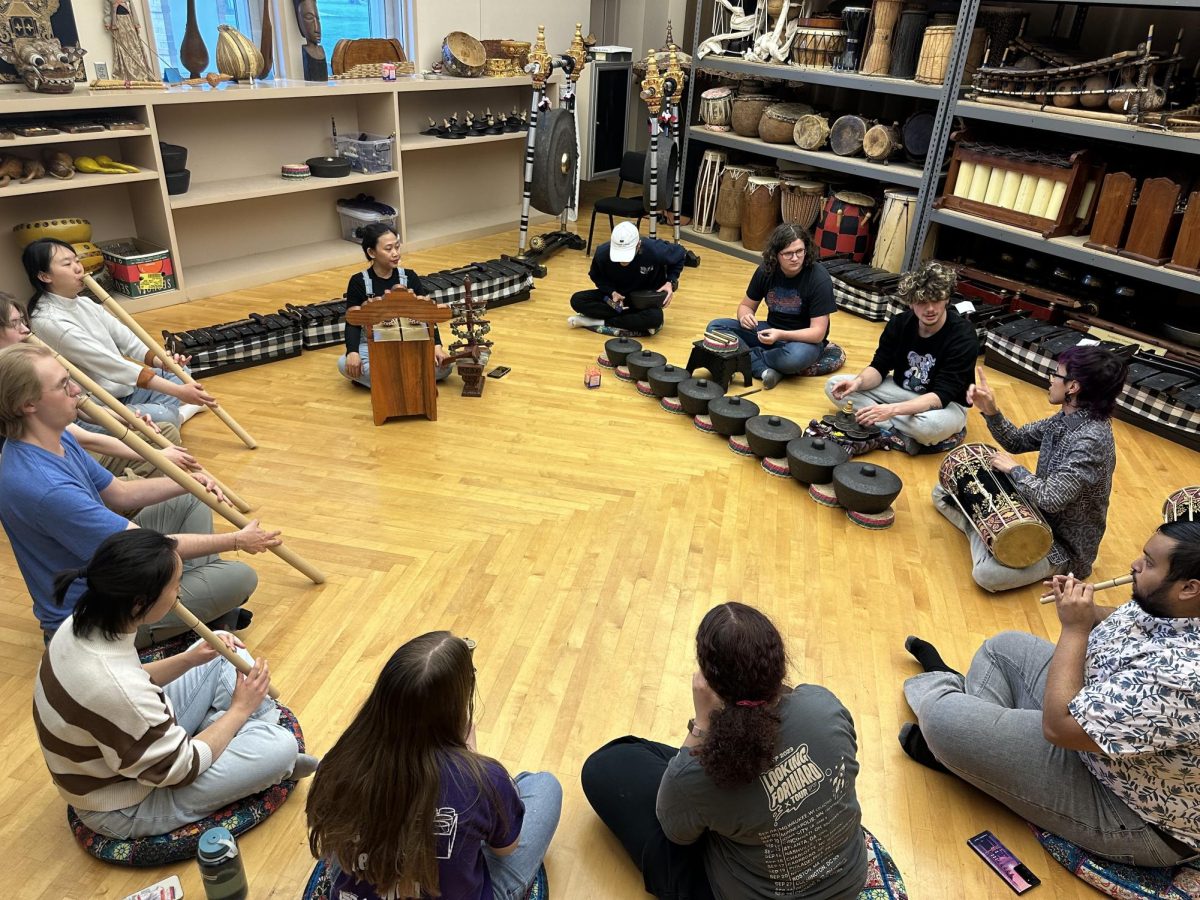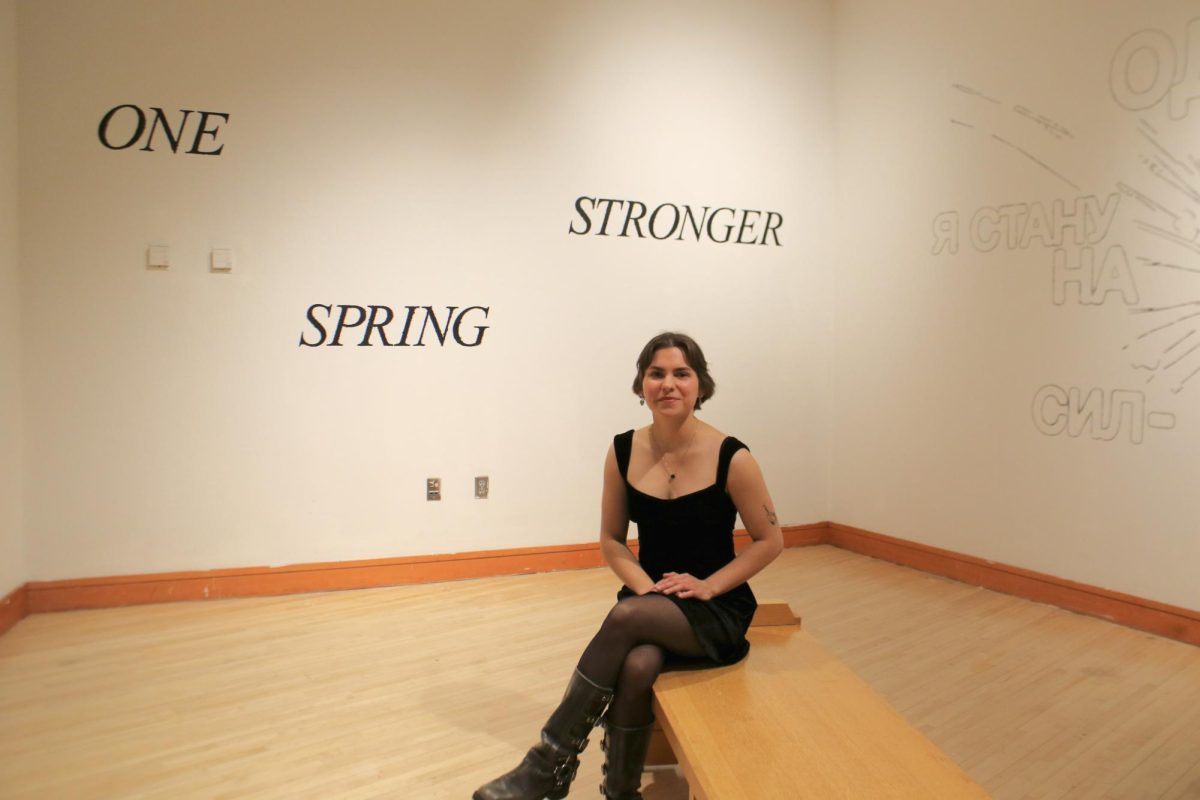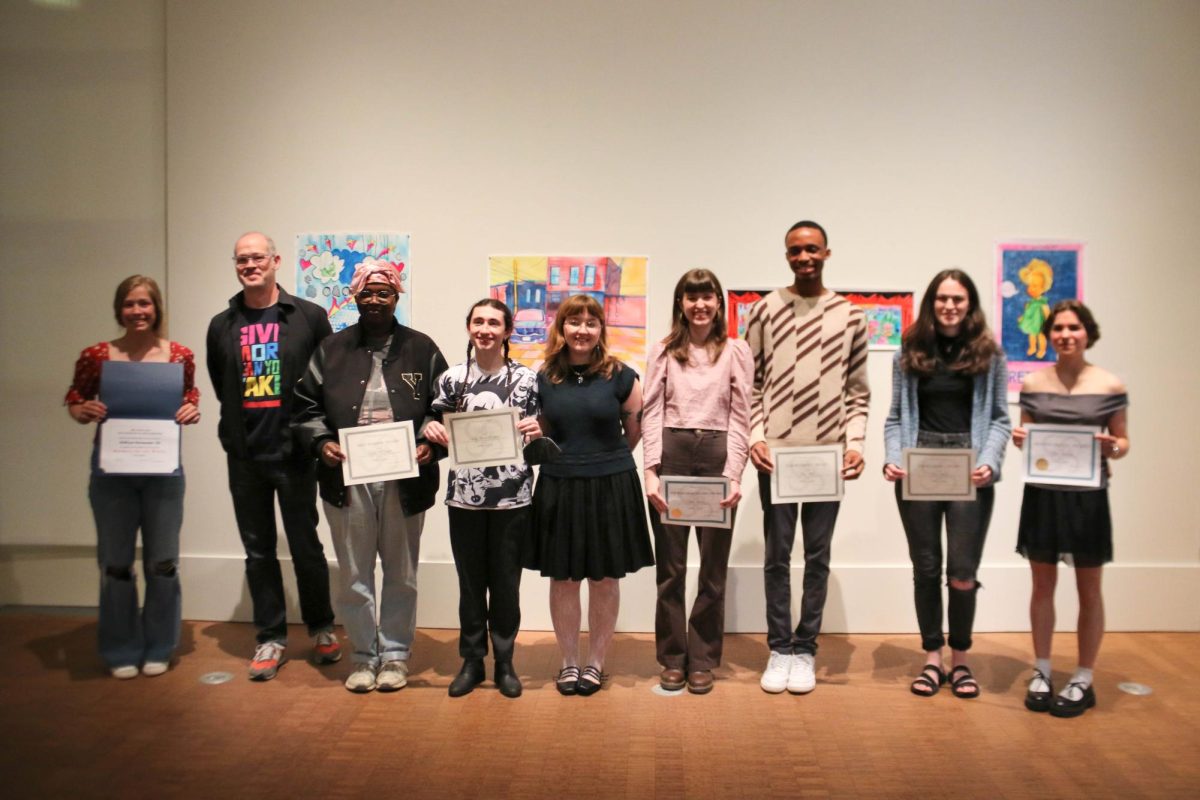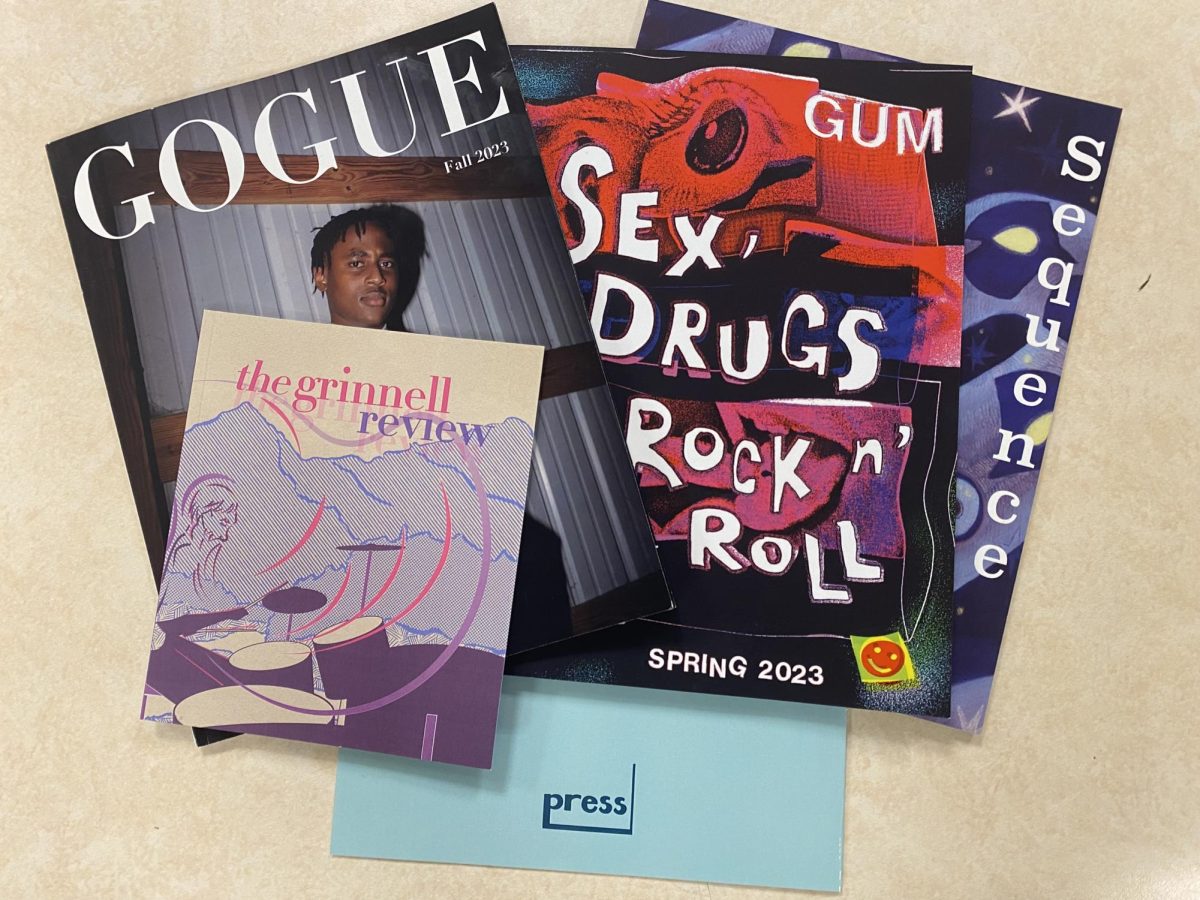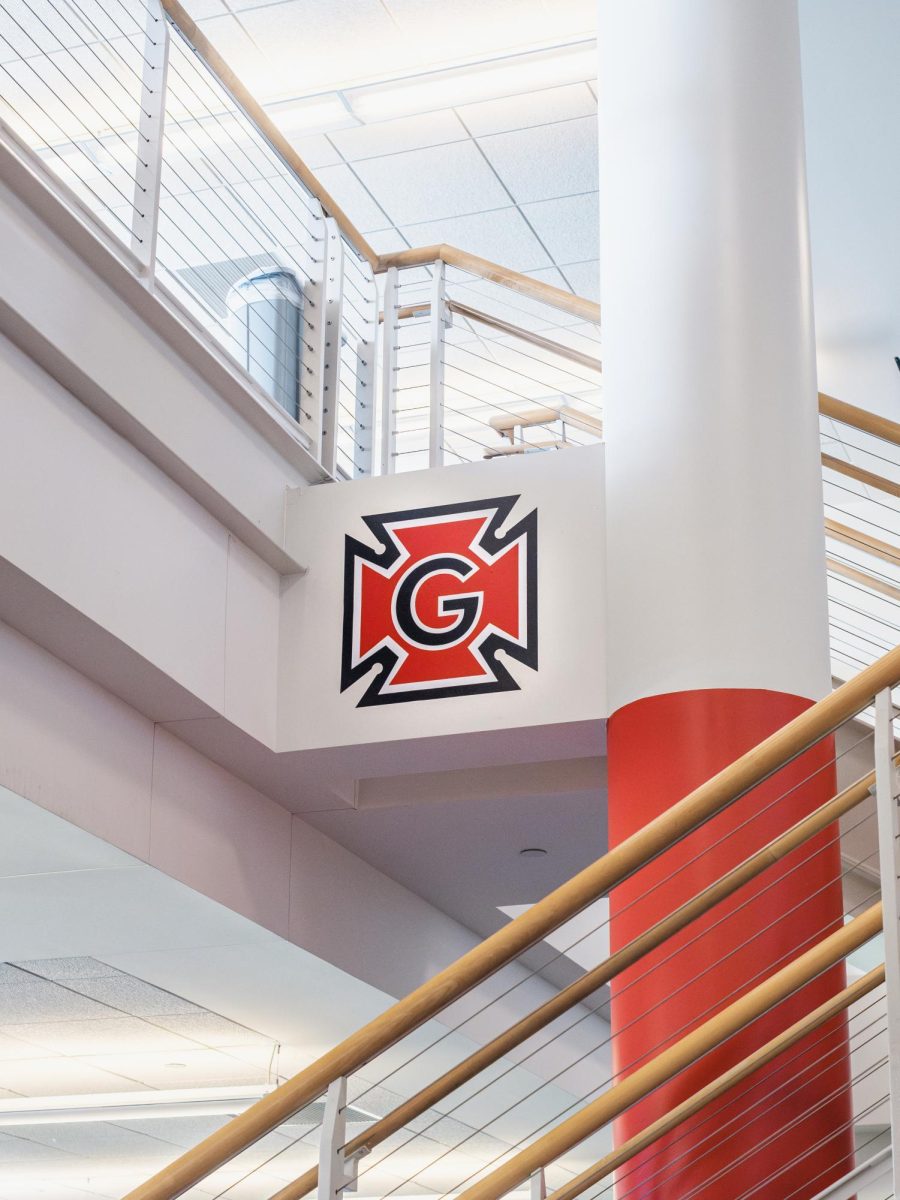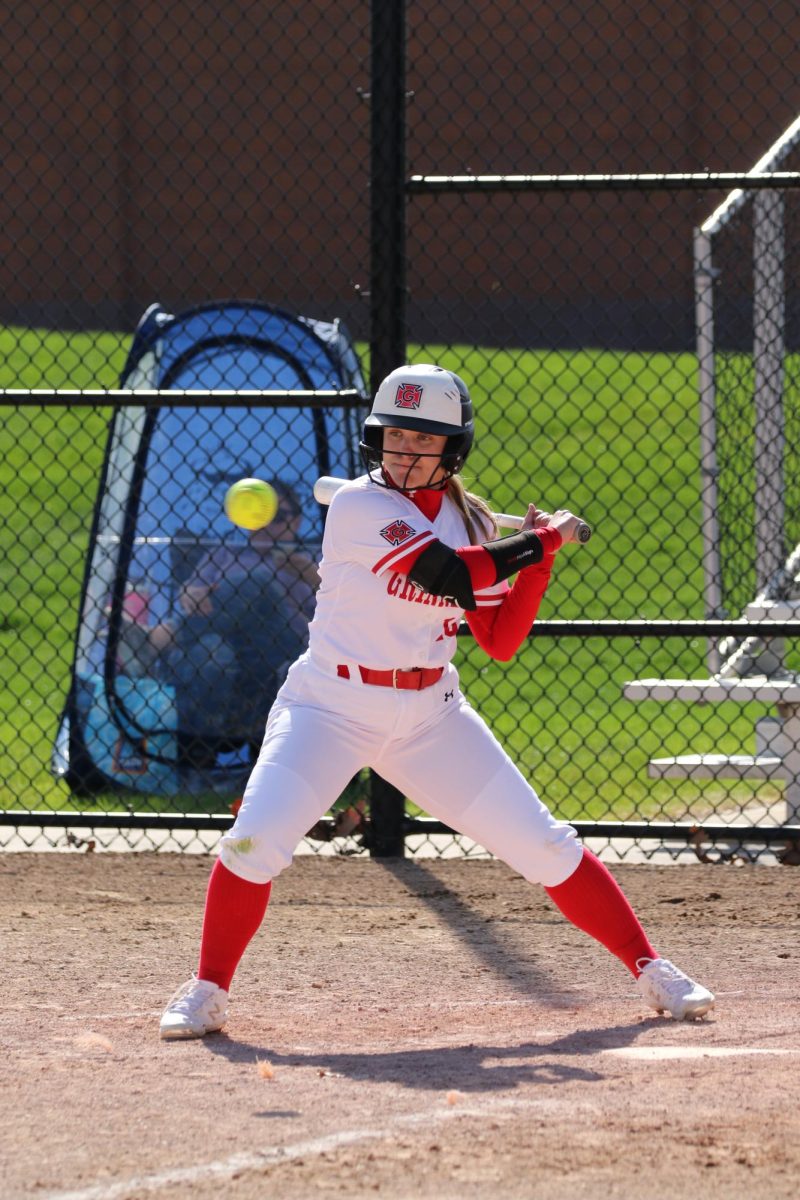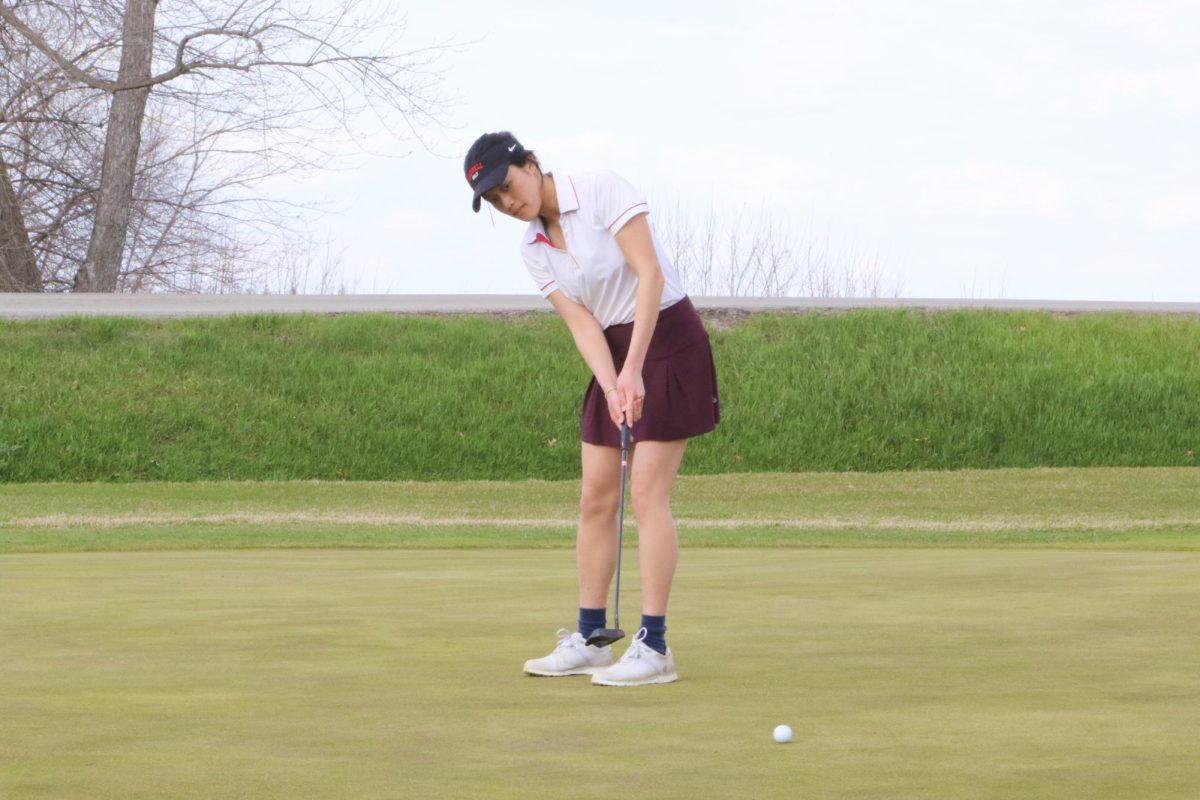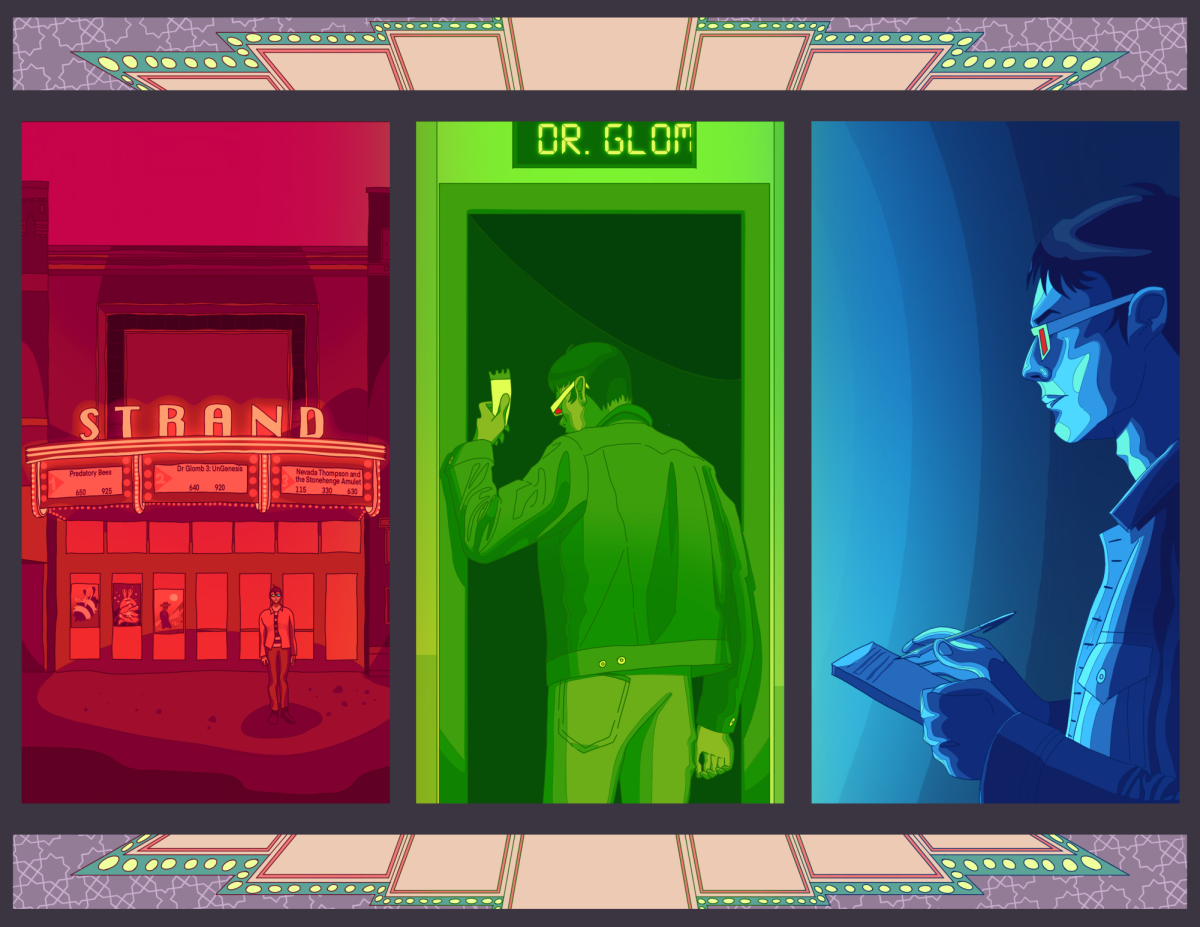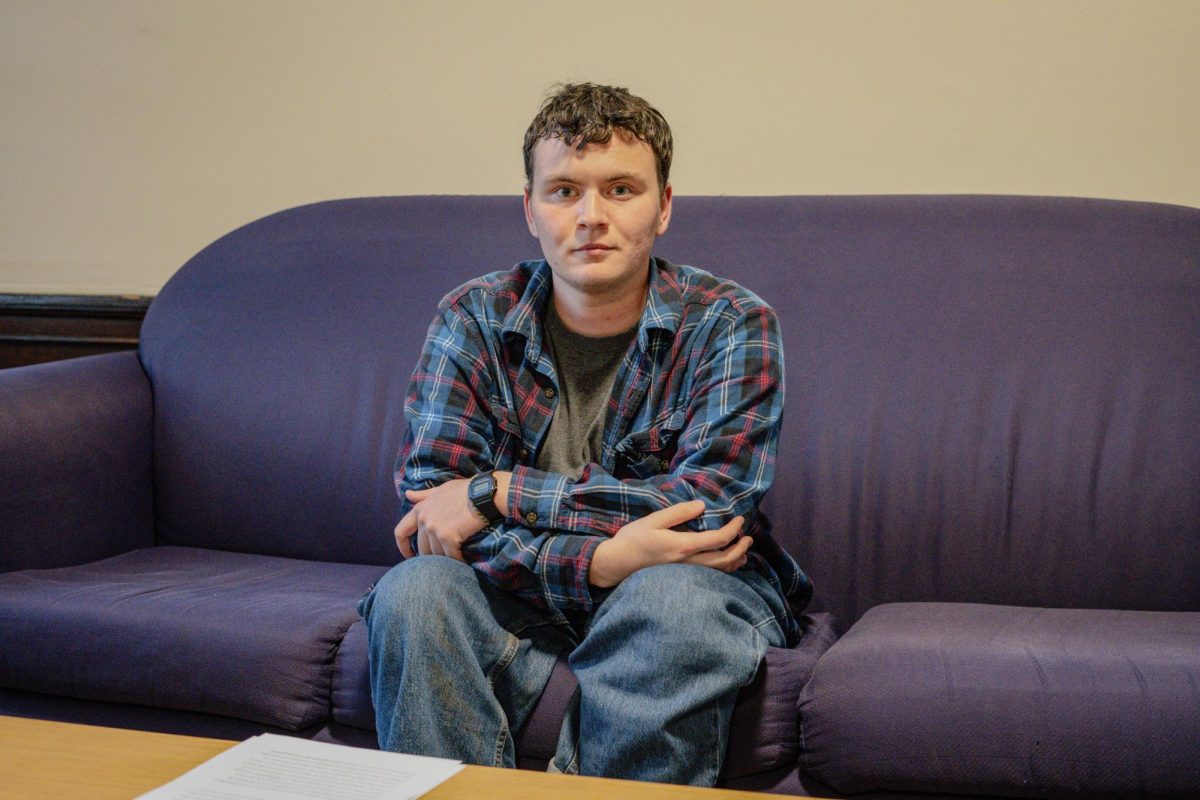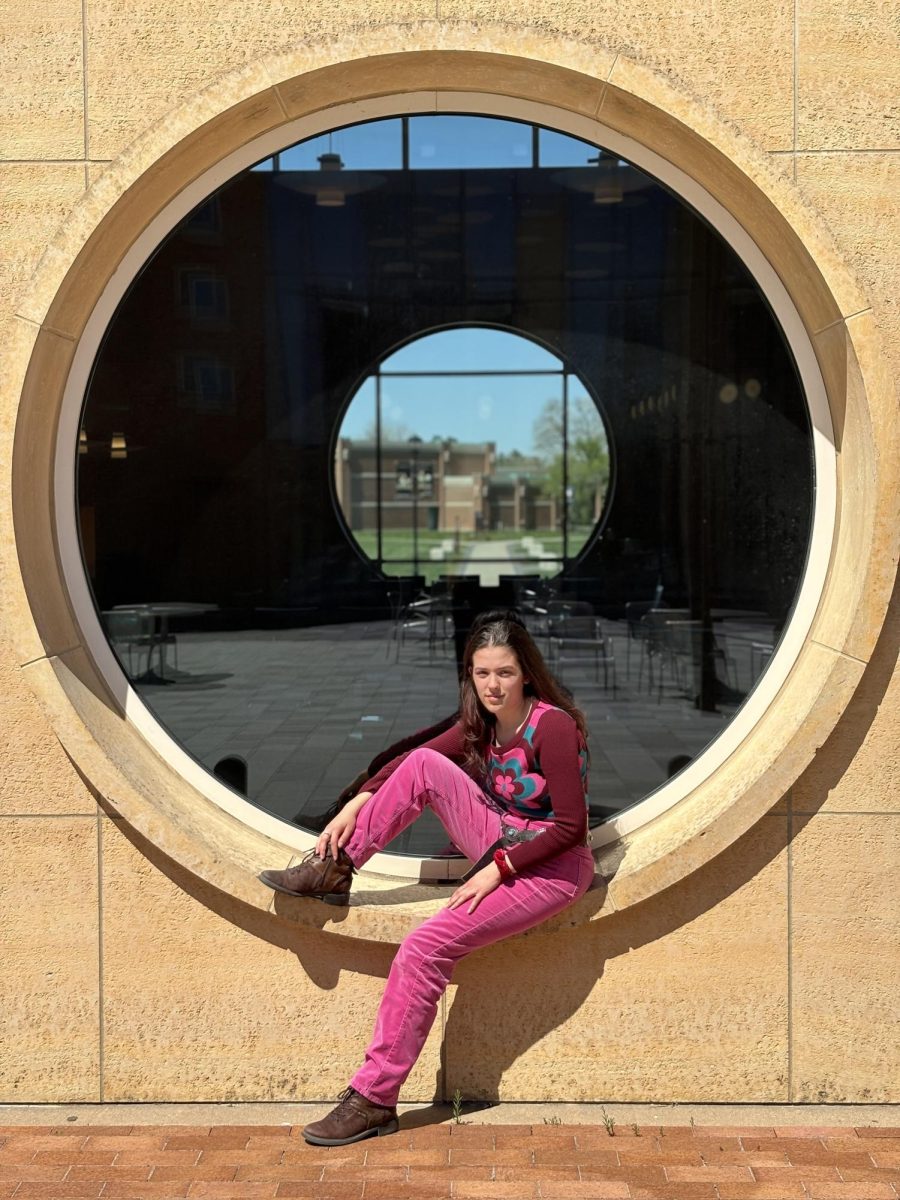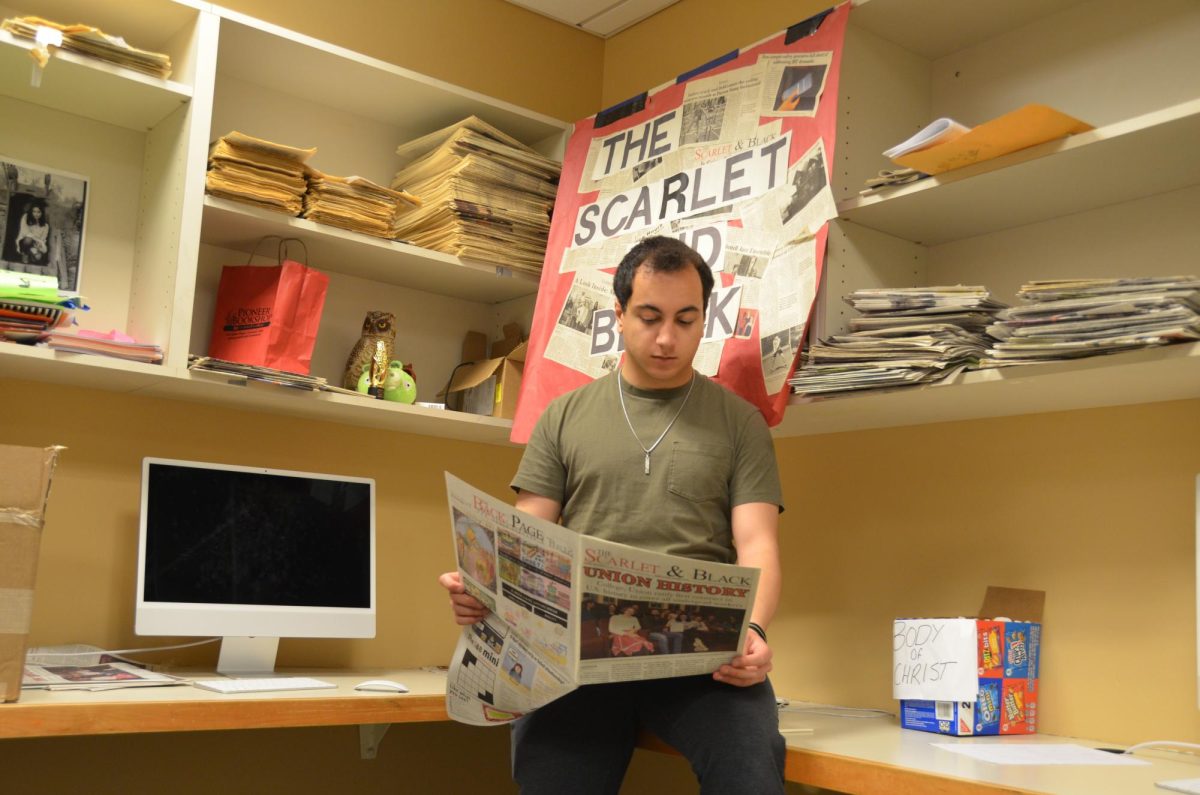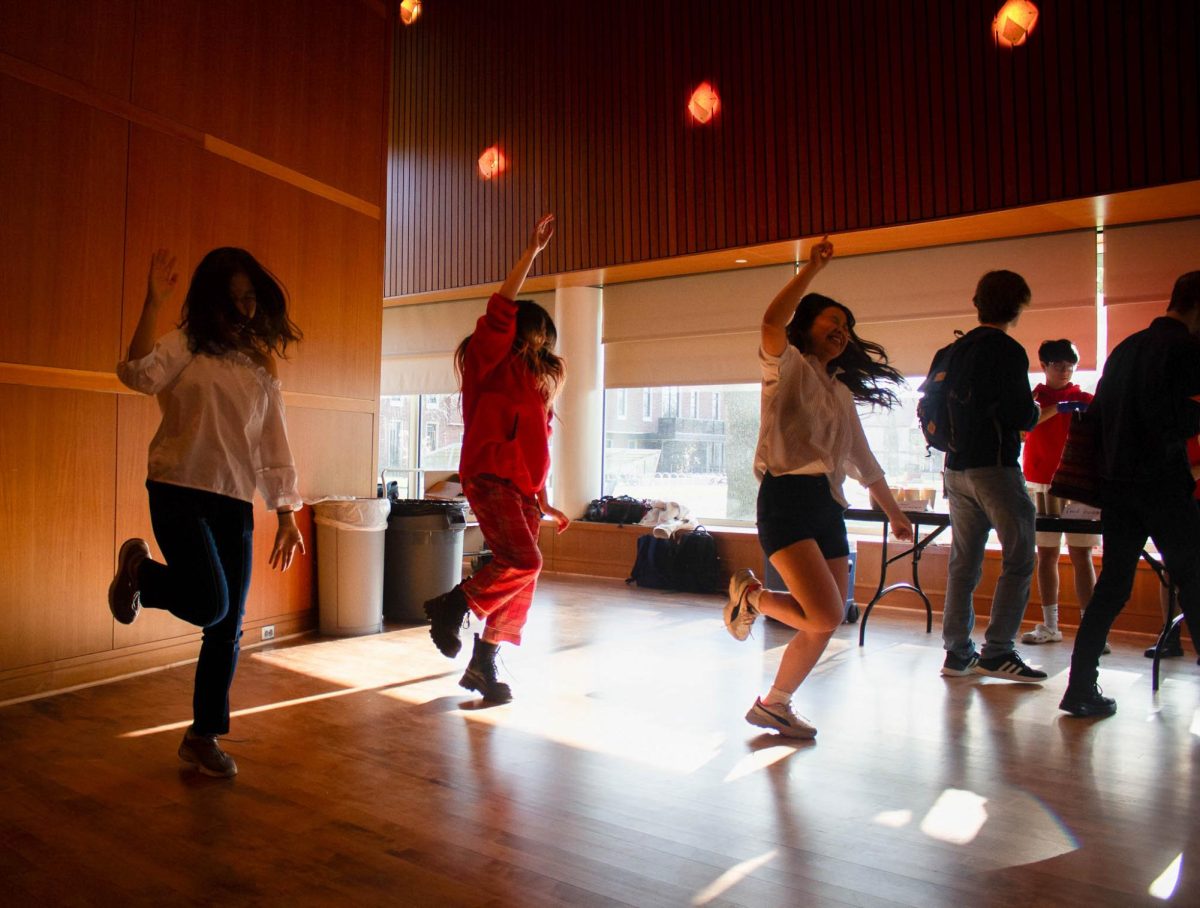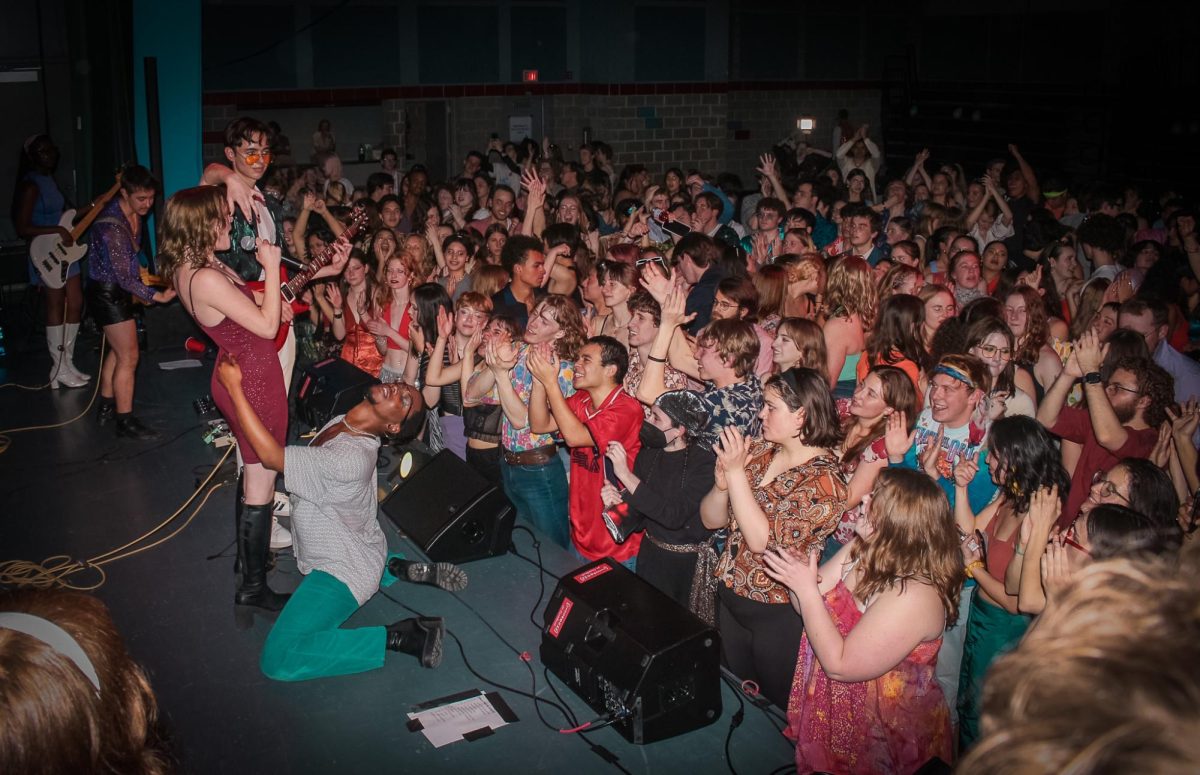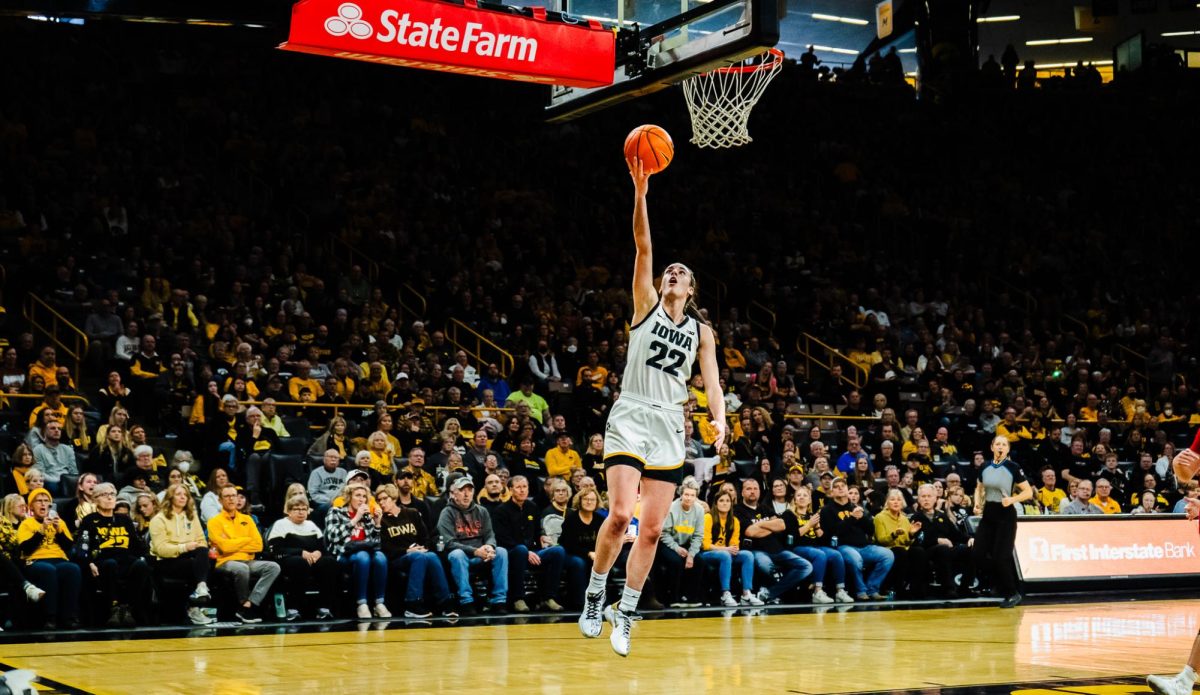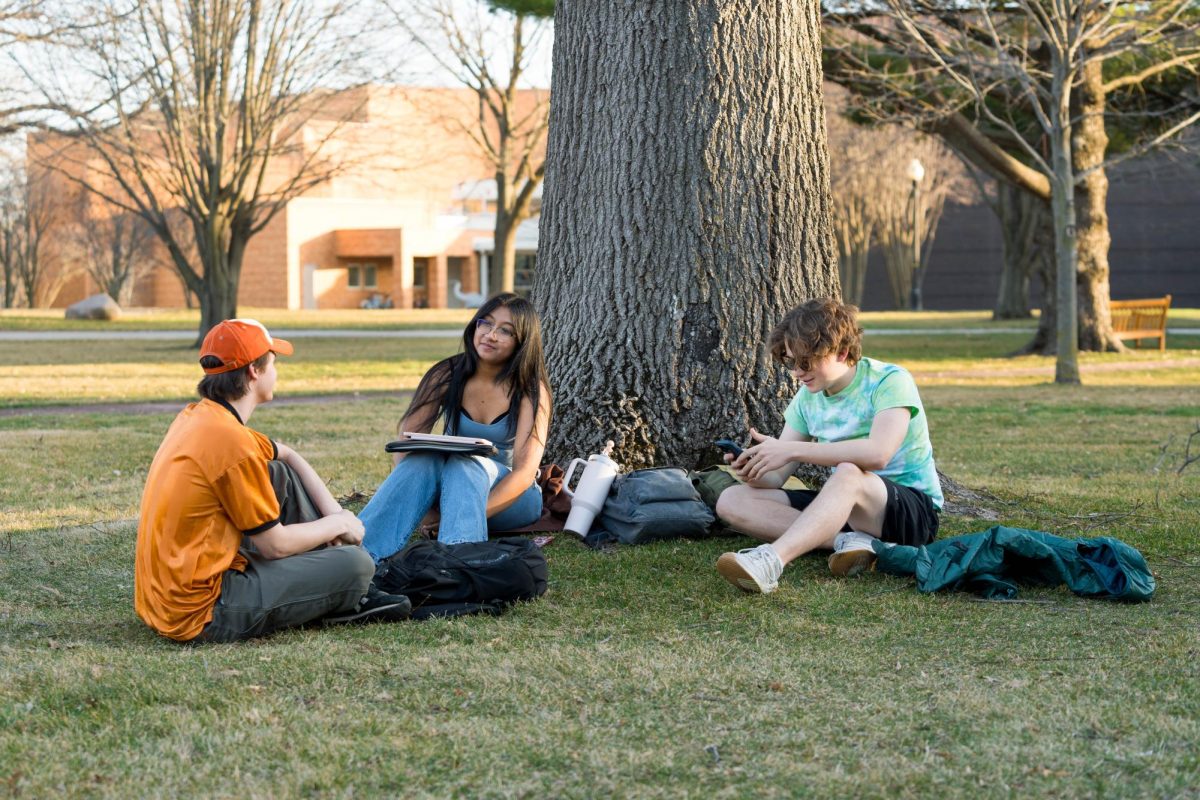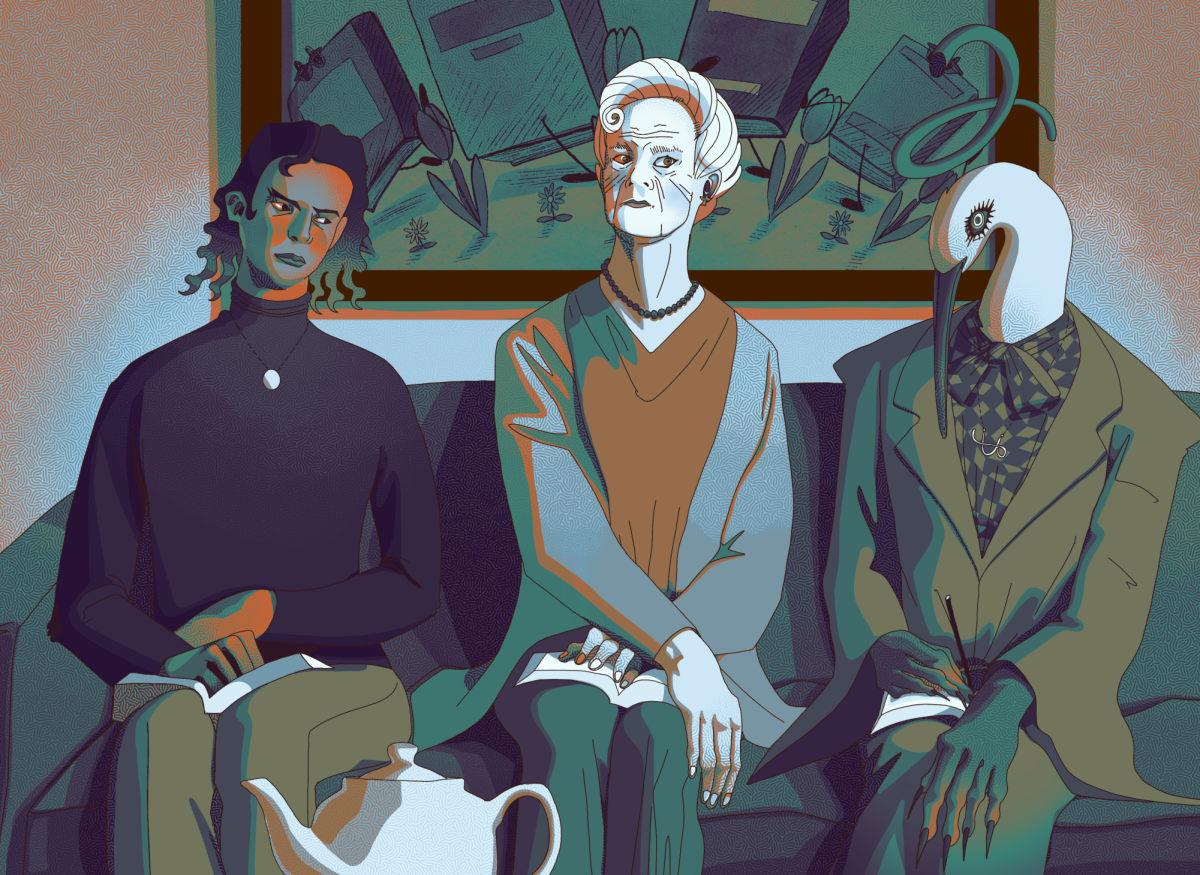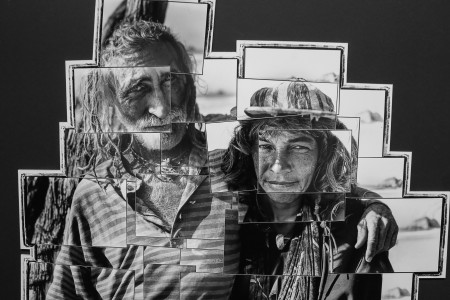
Jack O’Malley, Copy Editor
omalleyj17@grinnell.edu
Yesterday, Nov. 12, was the grand opening of the Stewart Gallery’s latest exhibition titled “Assembled Portraits,” hosted by the Grinnell Area Arts Council. The artist behind the exhibition is David Van Allen, a recently retired Professor Emeritus of Art from Mount Mercy University in Cedar Rapids, Iowa, where he taught design and photography for 29 years. Van Allen gave a talk during the opening last night about his art and the process behind it.
The exhibition itself features large-scale portraits made up of a combination of many different smaller pictures and other artwork.
“[Van Allen] has a unique style of taking multiple perspectives during a photo session and then basically assembling all of those different viewpoints and perspectives into a completely new picture,” said Christian Lutz, Executive Director of the Grinnell Area Arts Council.
Each portrait takes Van Allen up to a year to create from start to finish. He will often take the pictures and then assemble them at a much later date. Van Allen has traveled a good deal in Mexico and a lot of the portraits feature people from that country.
As for what visitors to the gallery can expect when they see the exhibition, one will no doubt see a great deal of complexity to Van Allen’s pieces. His process lends itself to a variety of different perceptions of the artwork.
“Even though you know what the subject is, it’s being viewed from different angles, so there’s more than one interpretation to the piece—not only what the artist has created, but when someone comes to the gallery as a patron for the first time they can see something completely different,” Lutz said.
Some portions of the portraits in the gallery were damaged in the floods that devastated parts of Iowa in 2008. The damage to the pieces gives them a unique look with which Van Allen was initially displeased.
“I thought these were sepia tone photos … but actually [Van Allen] was working at the time of the flood and the way they were cleaning the building [he was in] is they pumped cold air into the building,” Lutz said, while discussing the affected portraits. “With the fumes that were already in the building and the cold air and the photographic vapors, there was a chain reaction that caused some of the photographs to turn that color.”
The exhibition itself is free to the public and will run until Dec. 17. The Stewart Gallery is open from 9:30 a.m. to 5:30 p.m. Monday through Friday and from 9 a.m. to 12 p.m. on Saturday.
